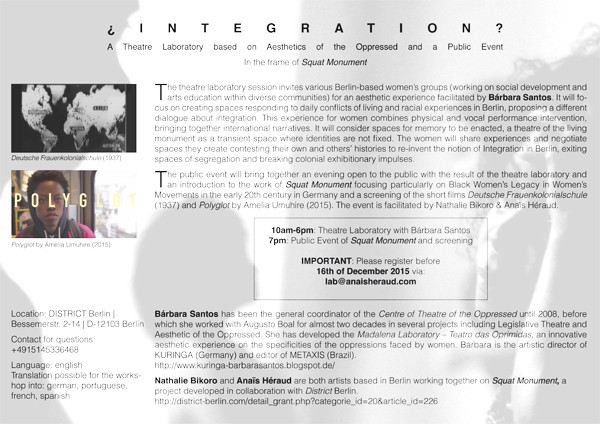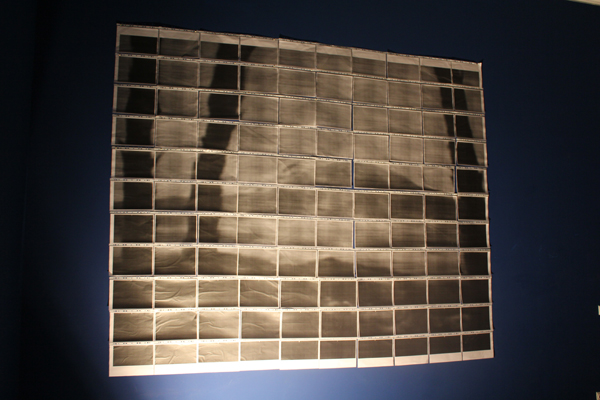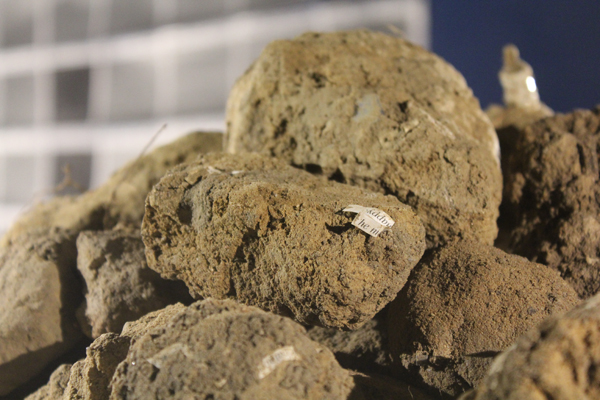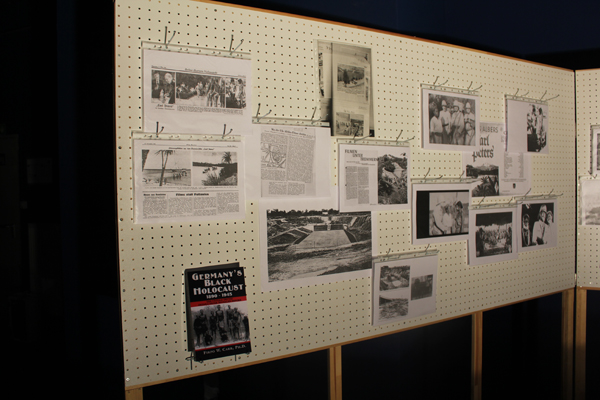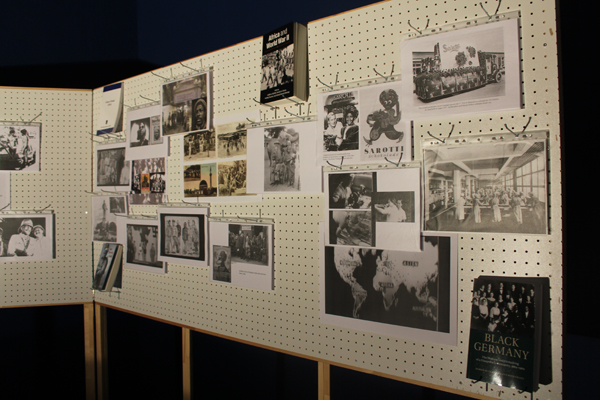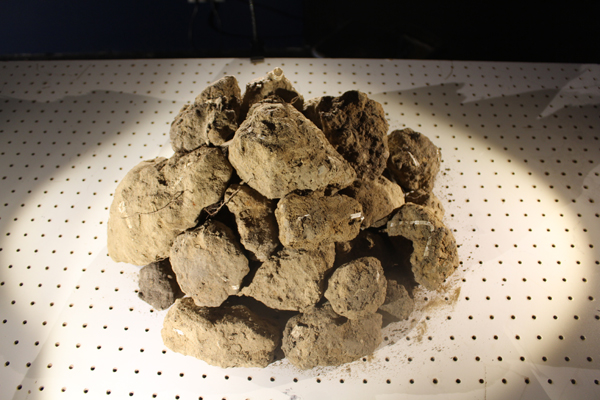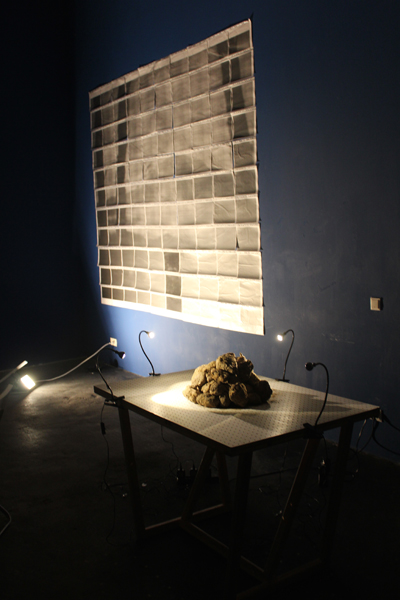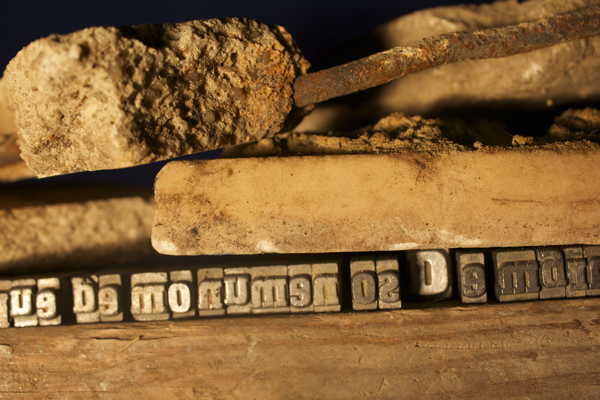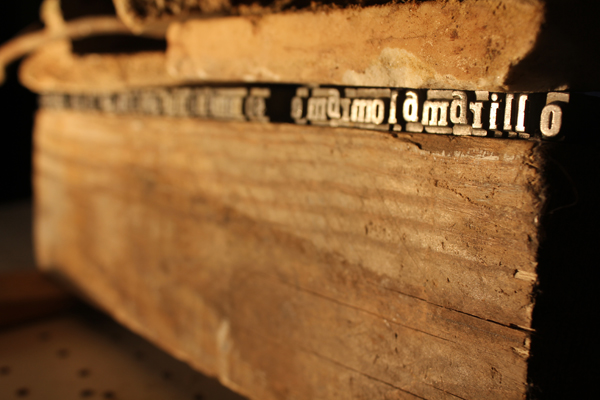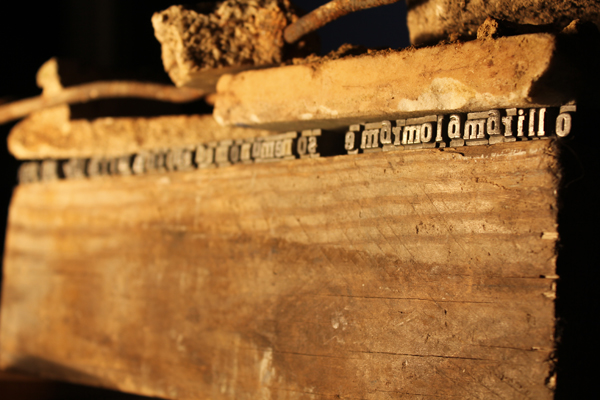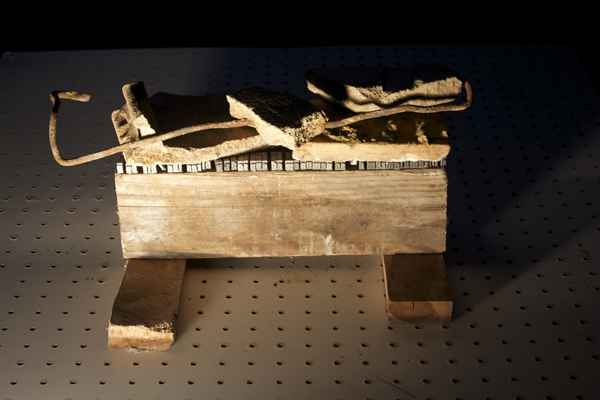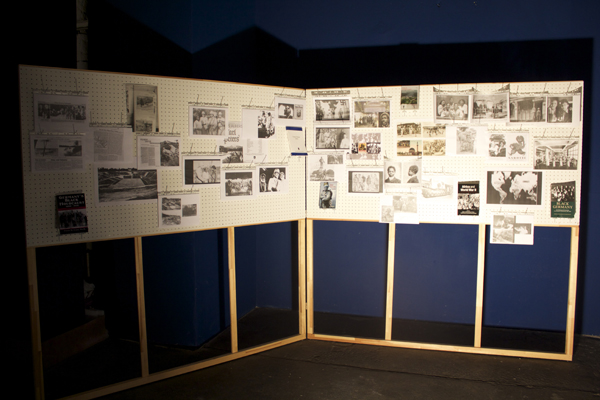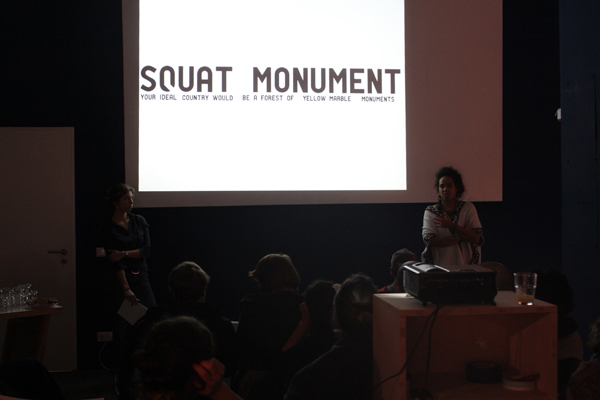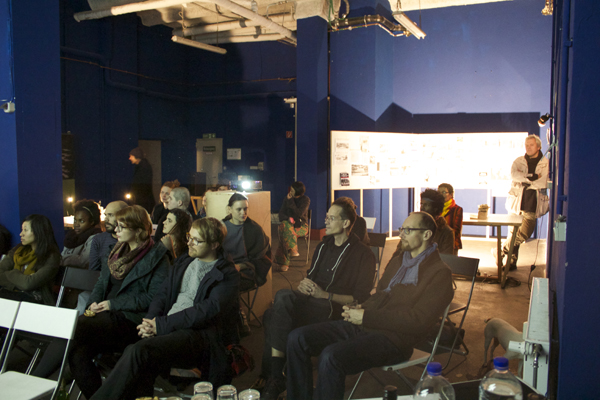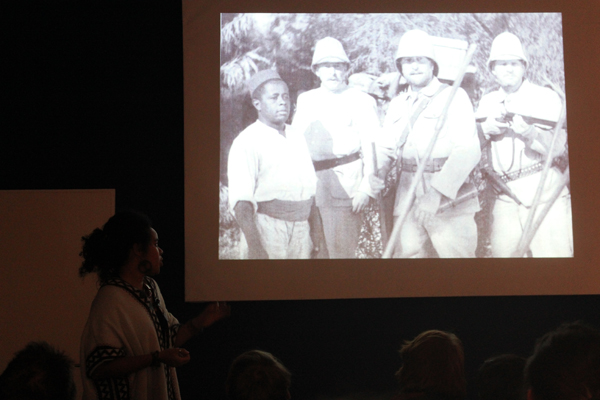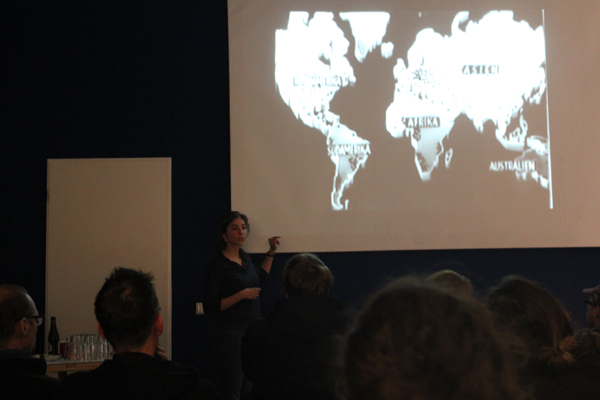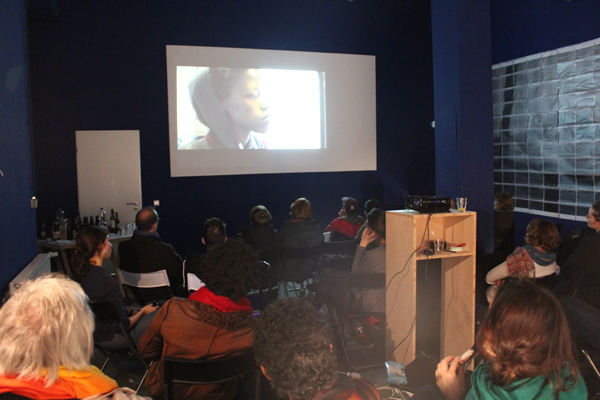Kiosk Culture
in the frame of the exhibition Trümmerberg Kilimanjaro
(exhibition of Anaïs Héraud-Louisadat and Nathalie Mba Bikoro)
Berlin, 2016
Squat Monument
- + BrowseBrowse →
- Home
The project Squat Monument: Your Ideal Country Would Be A Forest Of Yellow Marble Monuments (2015-today) attempts a decolonial re-evaluation of Berlin’s monuments and memory culture. Within the framework of an archeological intervention in Tempelhof's rubbel mountain (Trümmerberg) Marienhöhe, where Africa colonial propaganda movie were shot between 1934 and 1942, we want to reconnect experiential fragments, voices, and memories from different diasporas into a virtual map of unwritten history. The project hopes to soften dominant discourses about home, identity, and belonging as well as existing power relationships and to contrast them with non-linear, subcultural, and authentic stories.
Like sediments, different fragments are imbedded within or adjacent one another, growing into a metaphorical rubble mountain. Multiple interwoven transindividual histories emerge that are able to be experienced physically and, in their processuality, oscillate between fact and myth. The project takes the form of artistic interventions in public space, workshop, guided tour, exhibition and film essays. Our artistic project develops in dialogue with Berlin and international activists' groups, other artists and institutions; among others District-Berlin, Museen Tempelhof-Schöneberg, Soundarchive of the Humboldt University., Kuringa-Berlin and have been supported by the Dezentrale Kulturarbeit Tempelhof.
Kiosk Culture
in the frame of the exhibition Trümmerberg Kilimanjaro
(exhibition of Anaïs Héraud-Louisadat and Nathalie Mba Bikoro)
Berlin, 2016
In the frame of the exhibition "Trümmerberg Kilimanjaro" taking place at District-Berlin, the artists Nathalie Anguezomo Mba Bikoro and Anaïs Héraud-Louisadat (Squat Monument) propose a new decolonial tour of Tempelhof's neighbourhood. In commemoration to resistance cinemas & anti-colonial movements and DIY systems of the urban Berlin landscapes after Germany's colonial debris. On Saturday 1st October from 1pm for our moving van tour Kiosk Culture from Sarotti at Merringhdamm to Tempelhof and finishing at District with our exhibition "Trummerberg Kilimanjaro" (Malzfabrik, Bessemerstrasse 2-14) focusing on the decolonial monuments and testimonies of women in resistance movements and a critical investigations in the means of colonial cinema productions in sites of Berlin's Tempelhof.
Photo: Emma Haugh
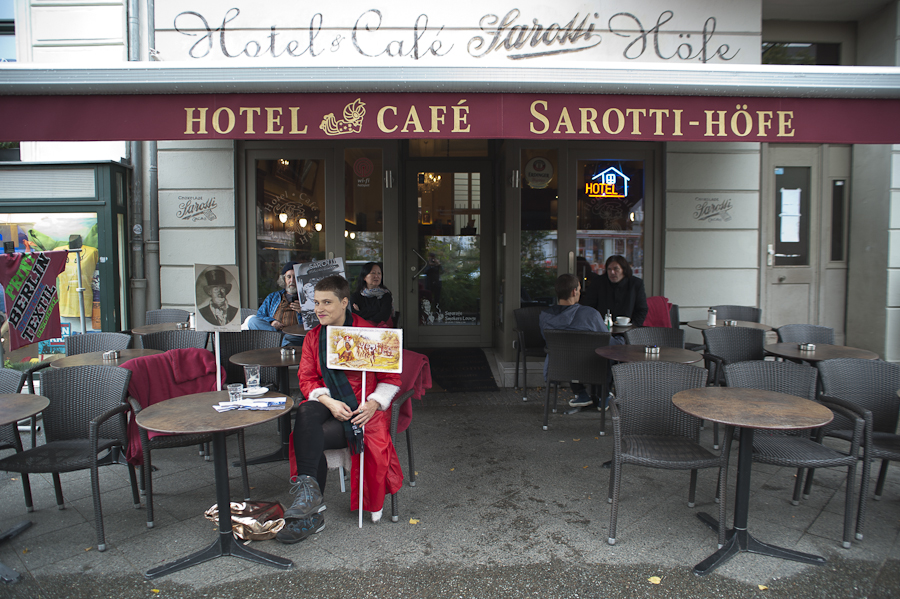

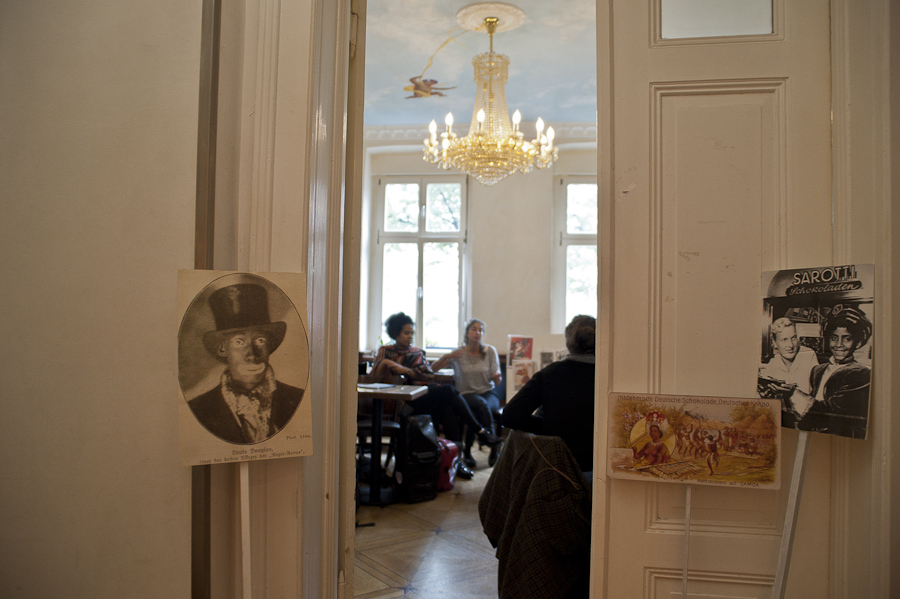
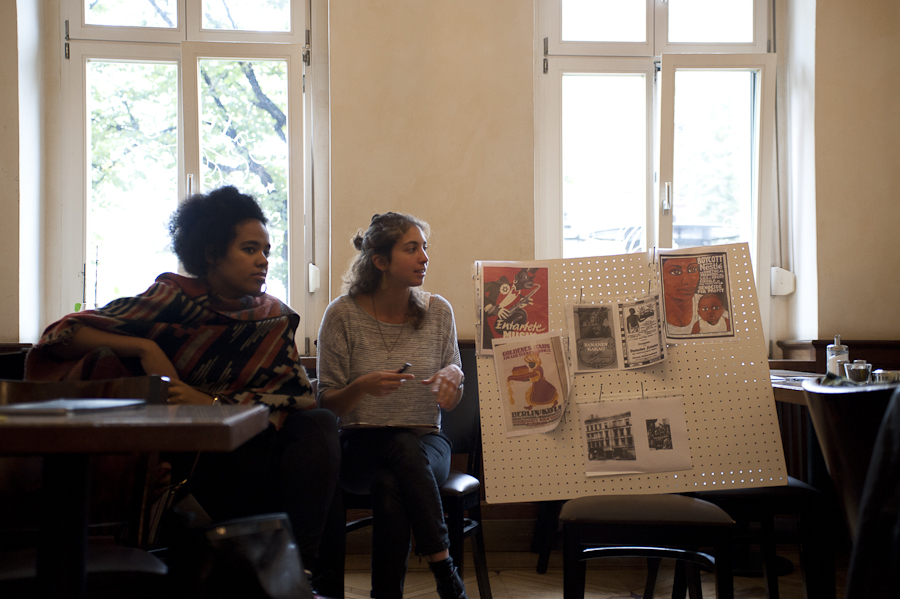
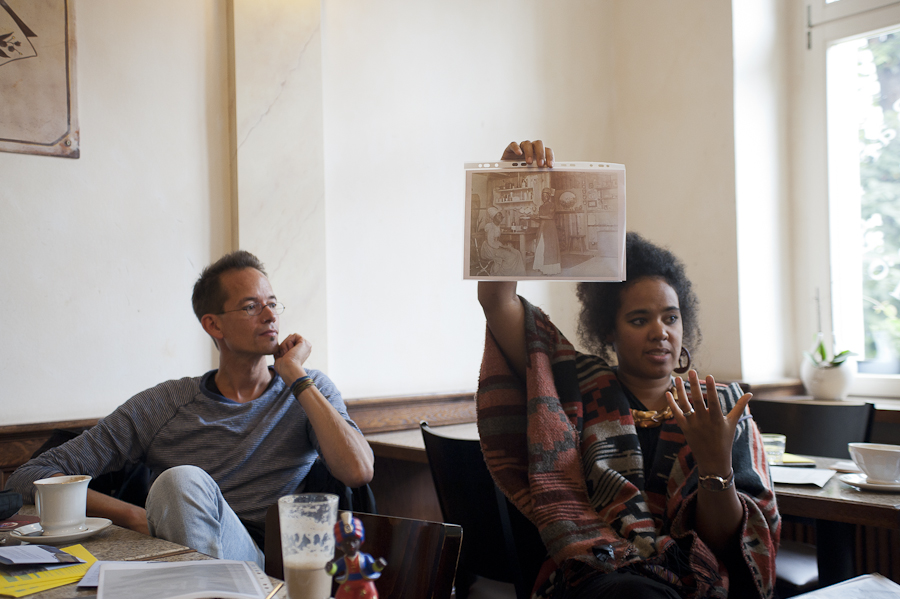
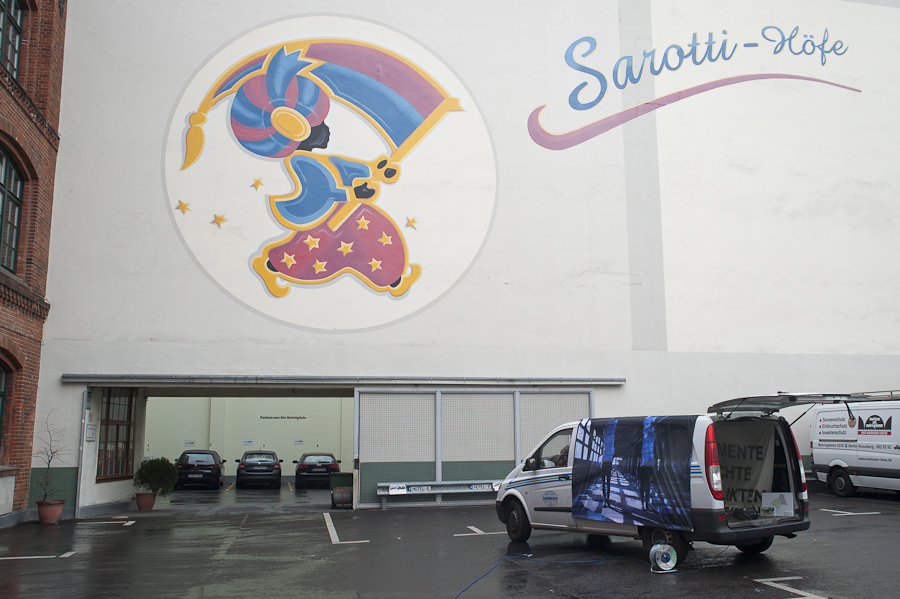
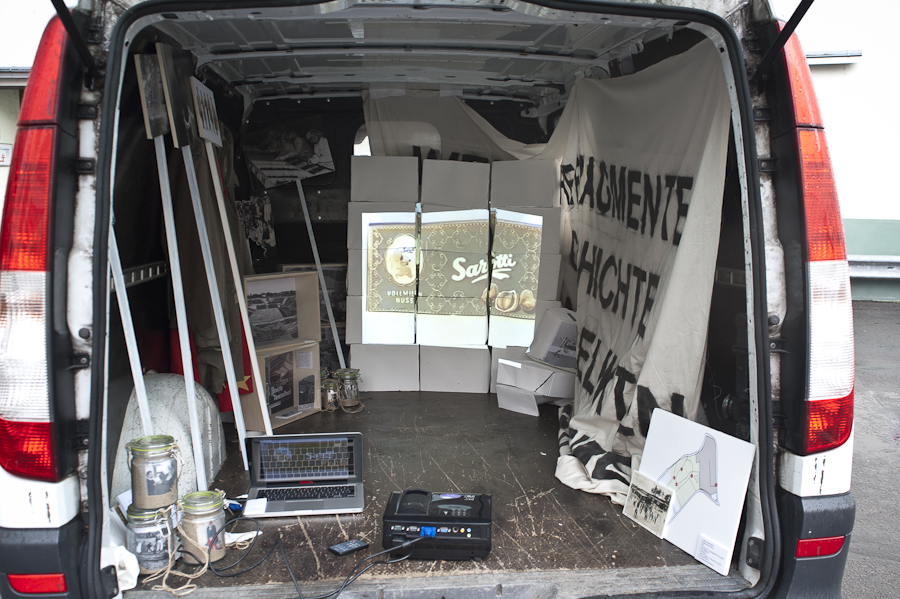
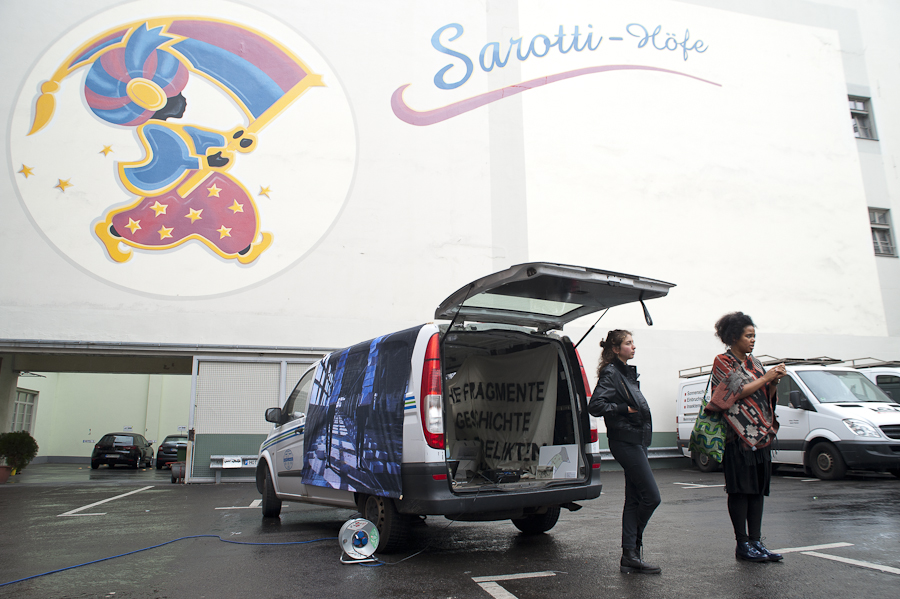
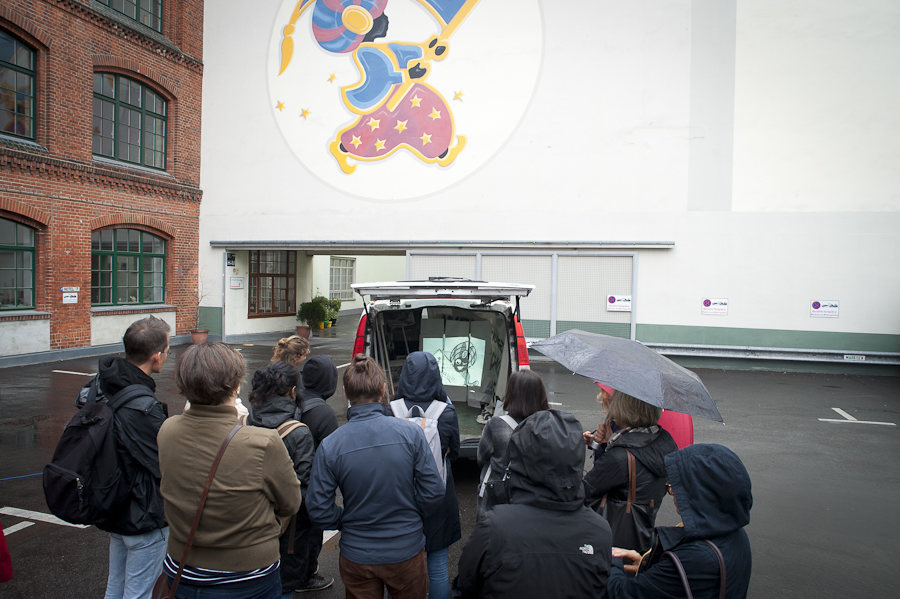
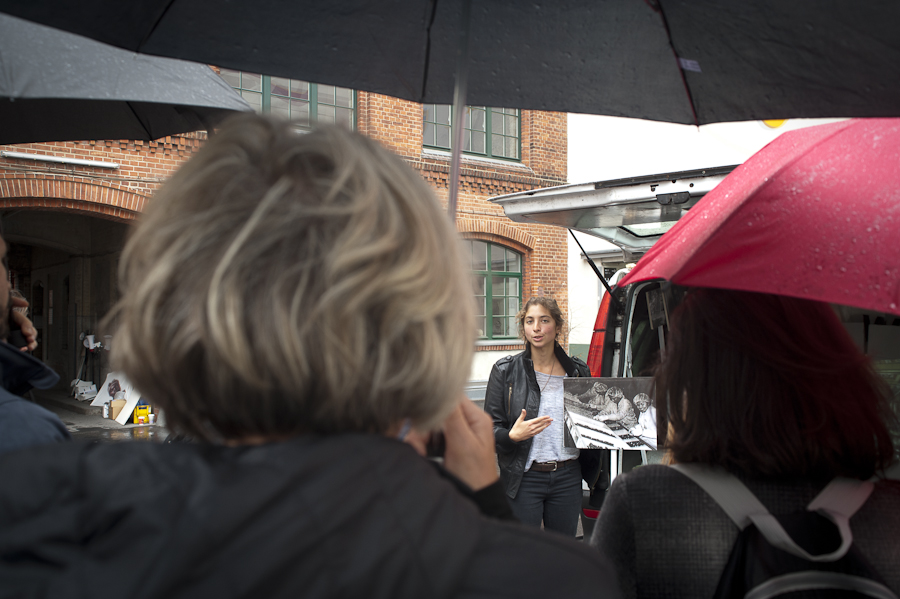
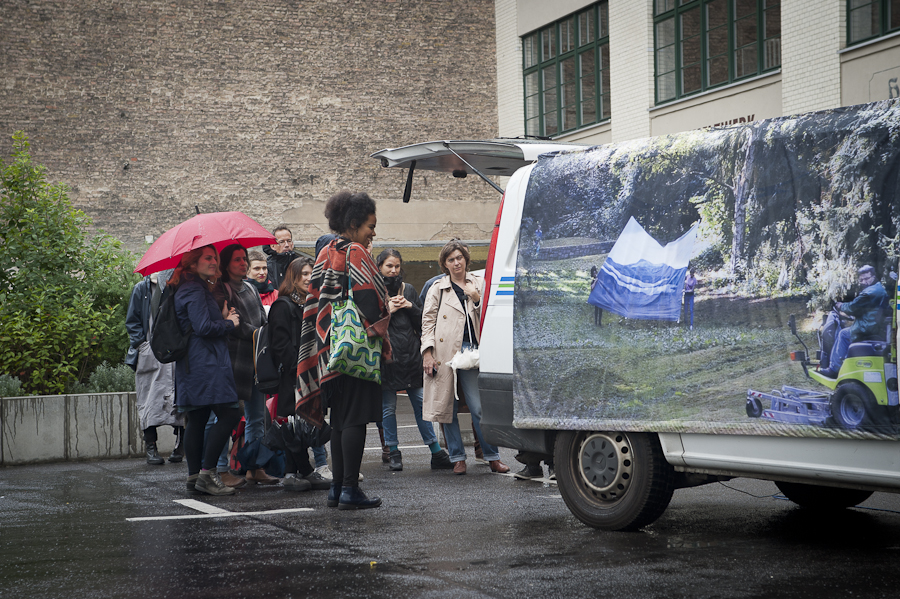
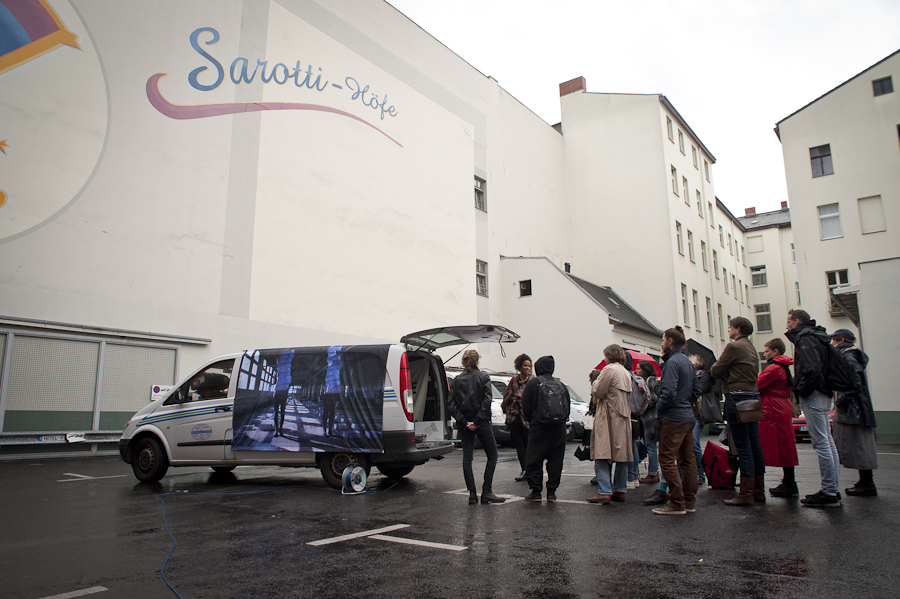
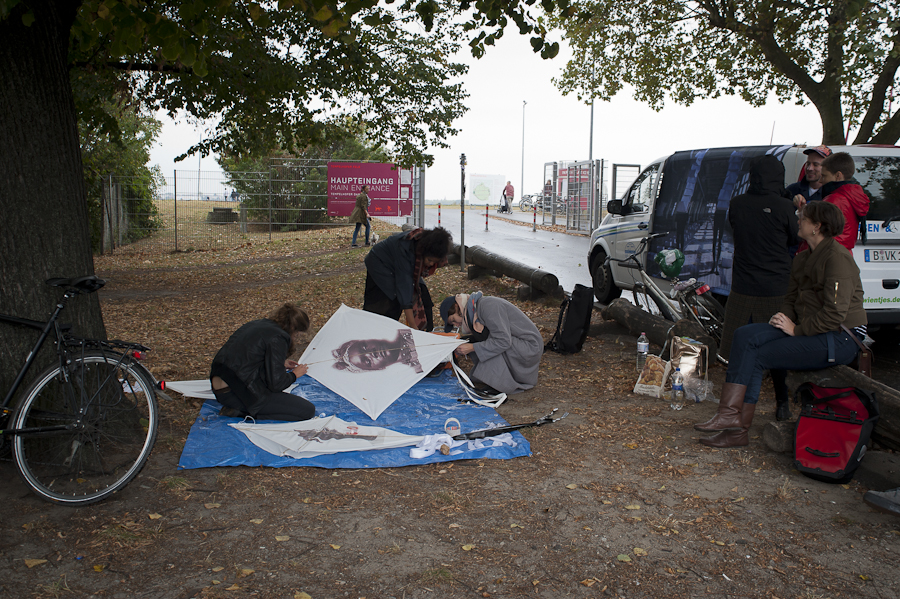
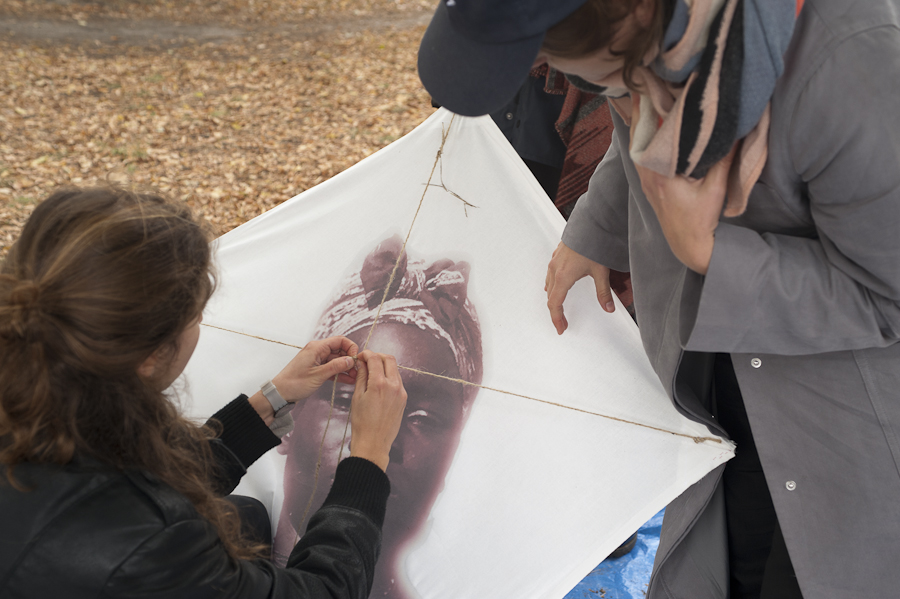
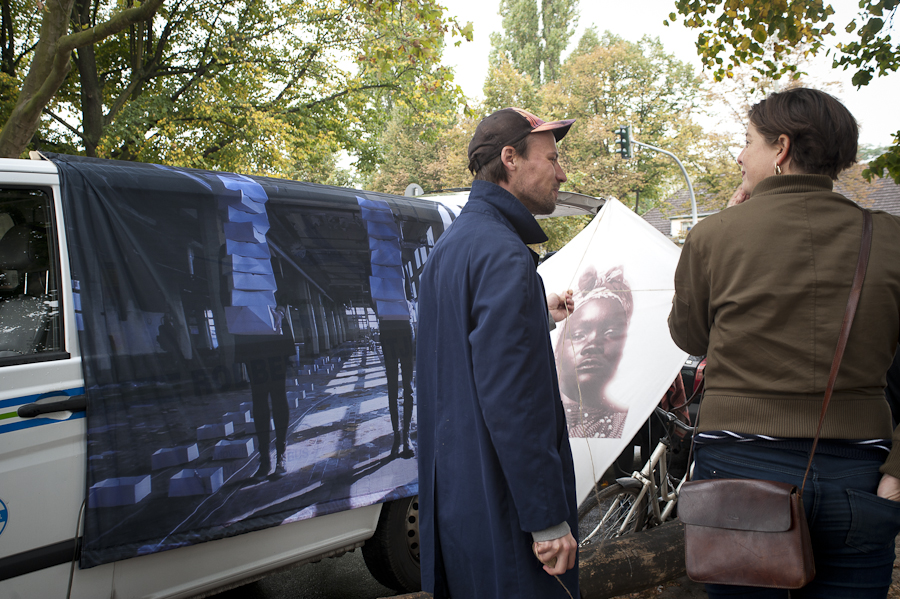
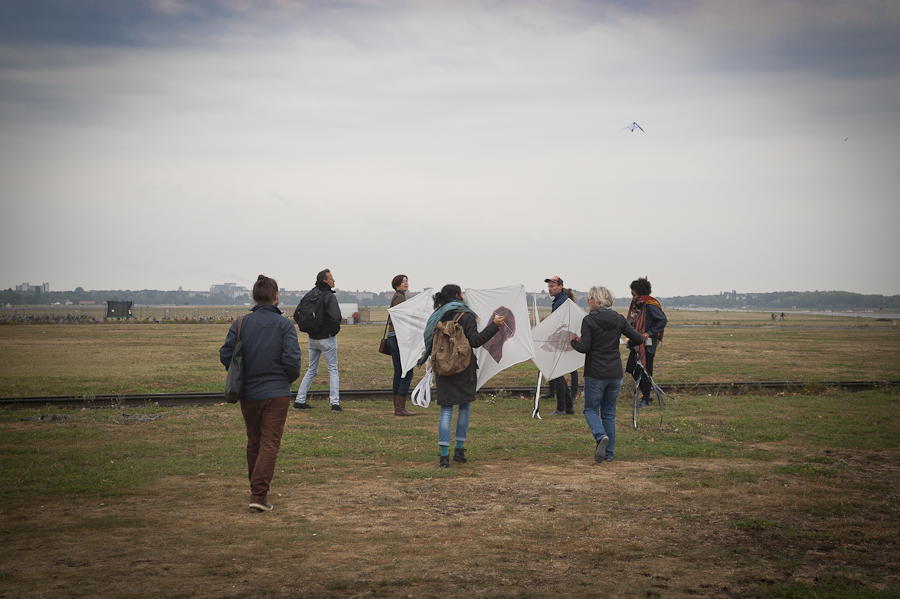
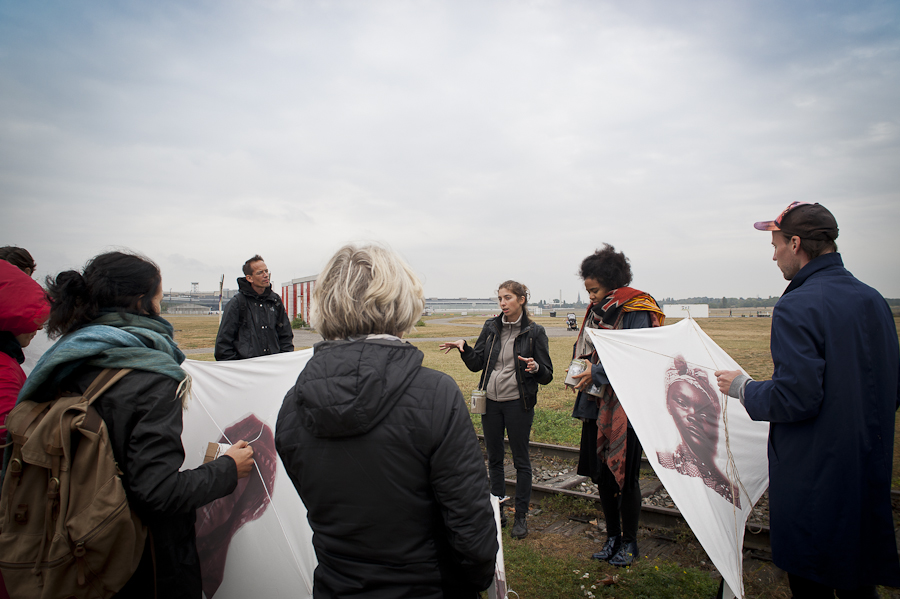
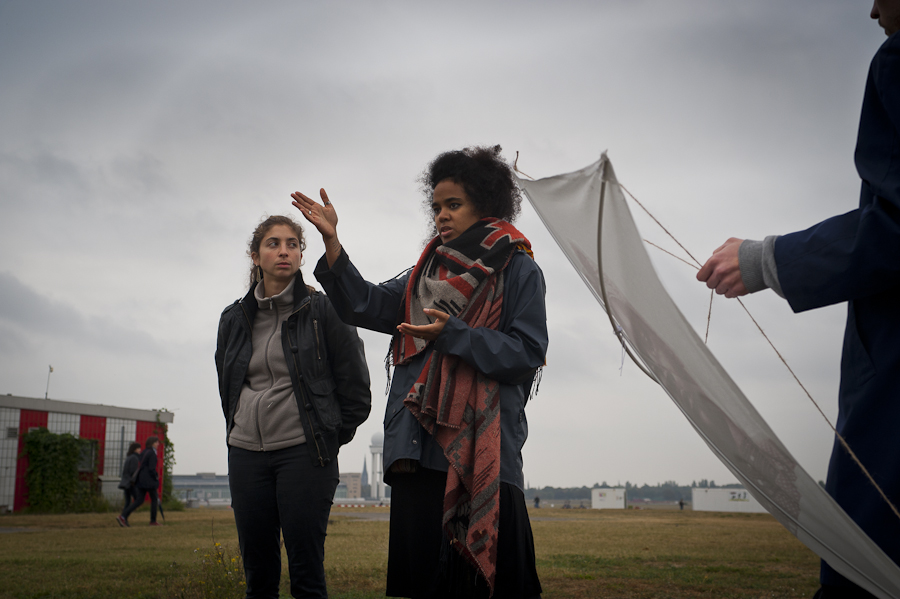
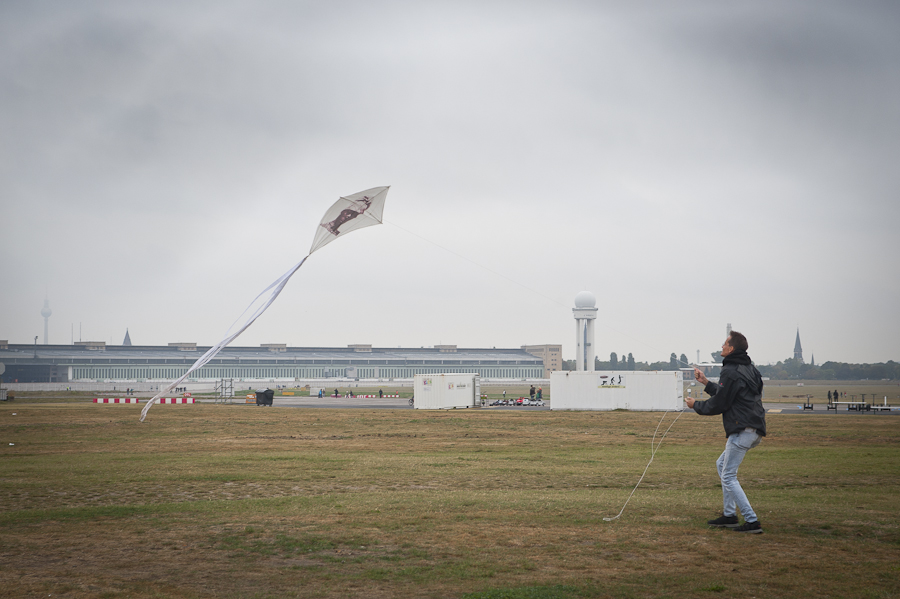
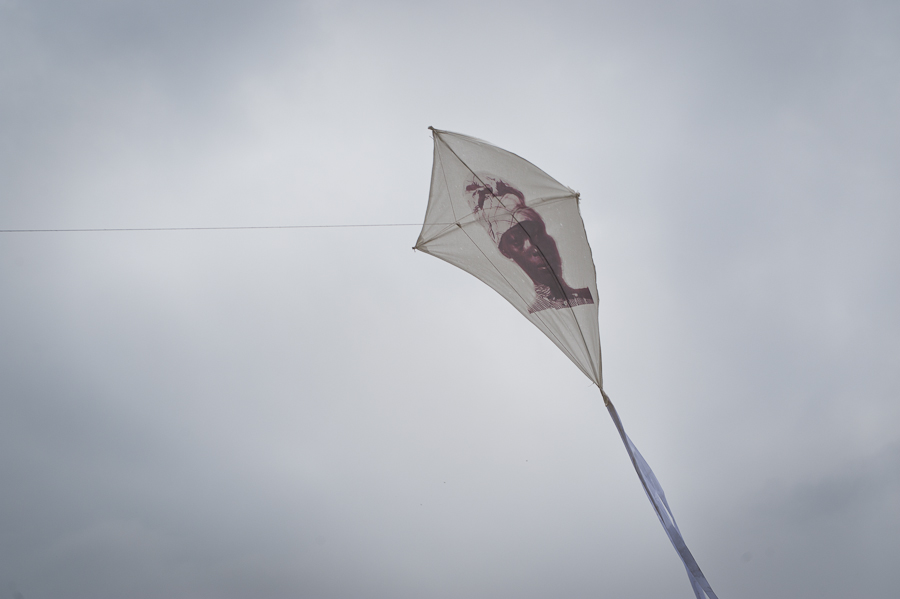
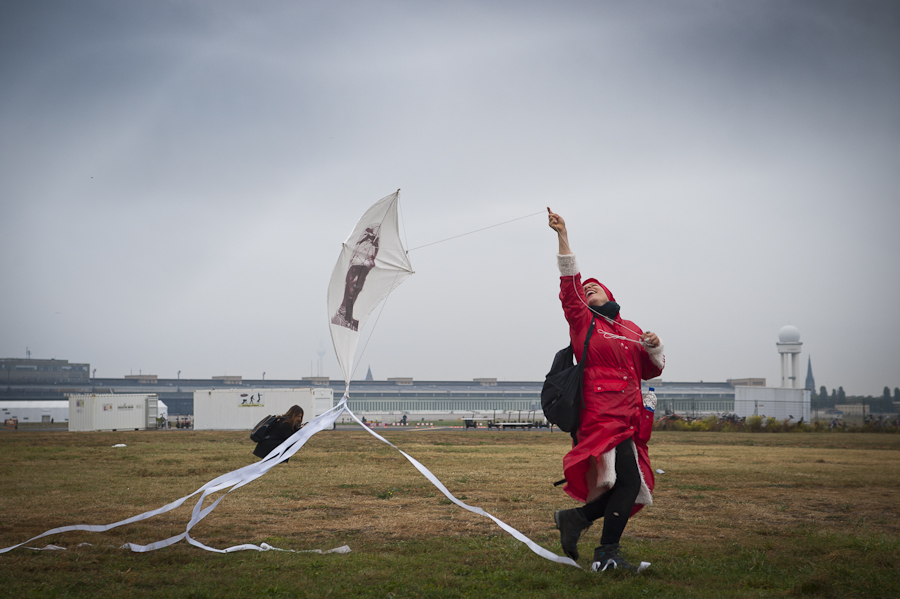
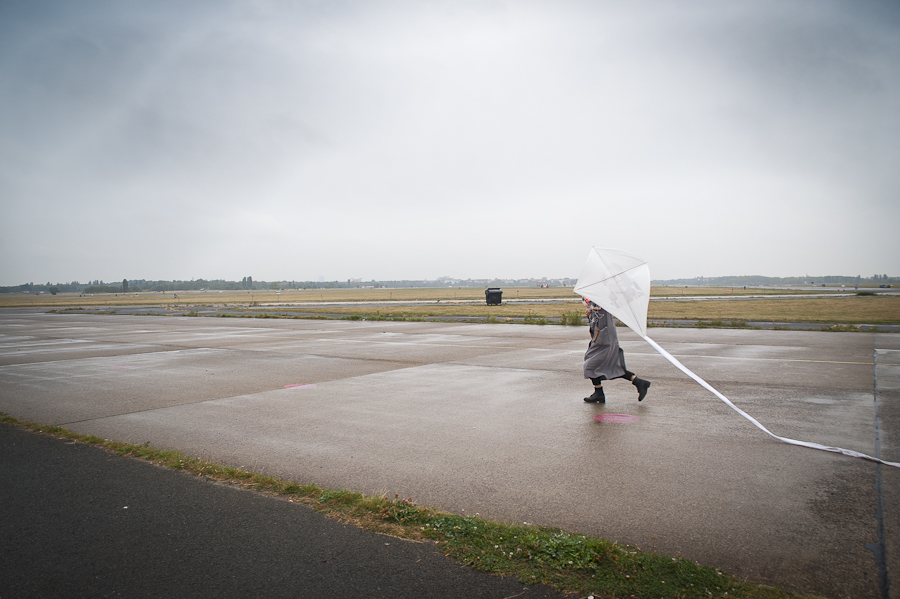
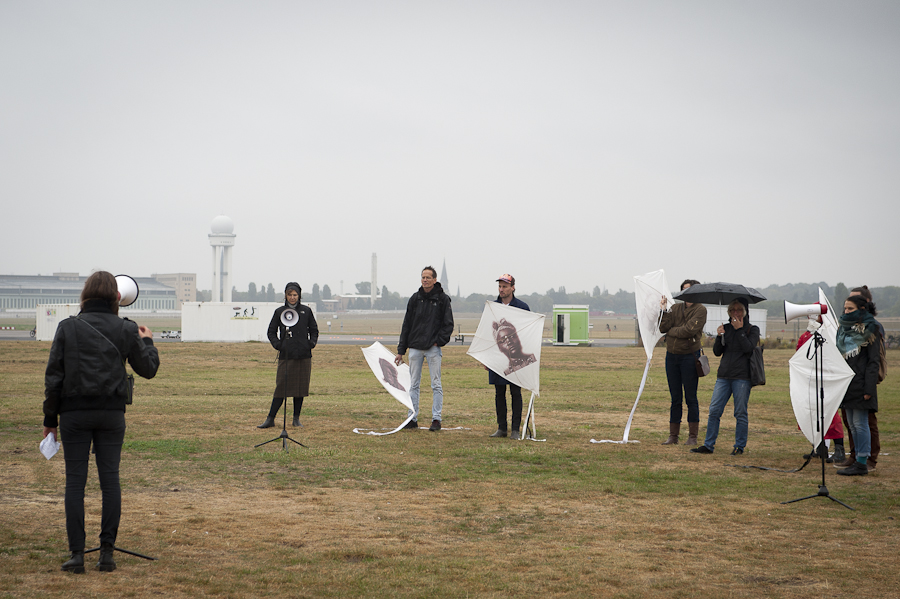
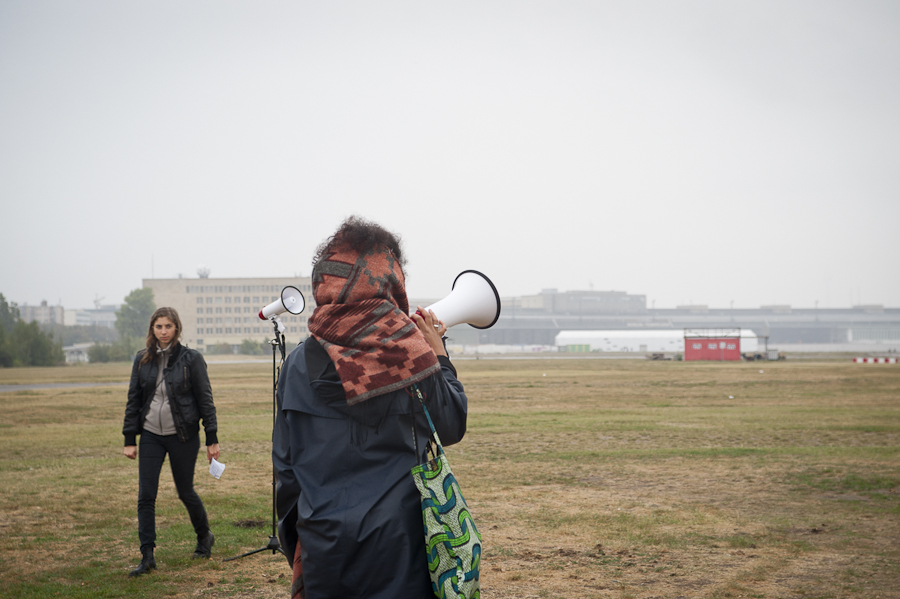
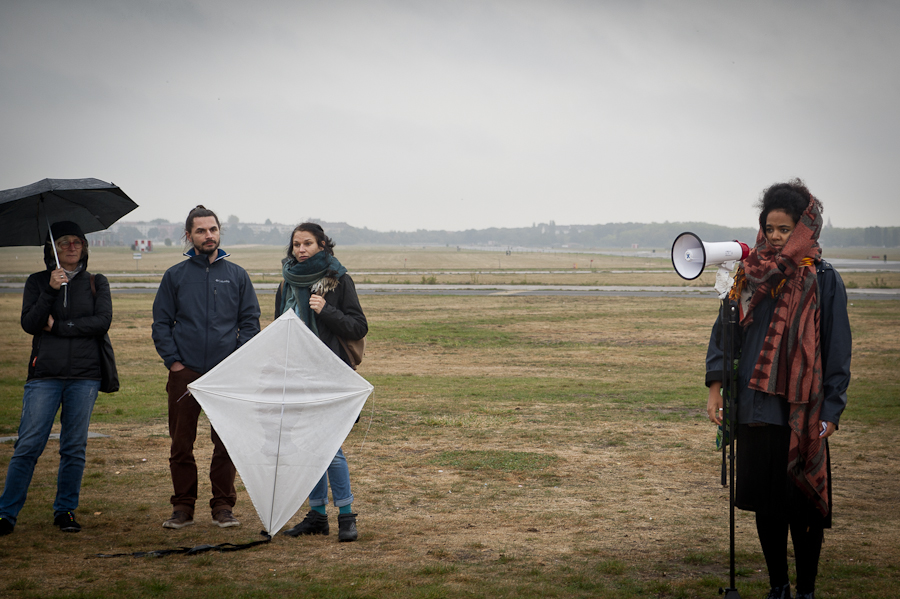
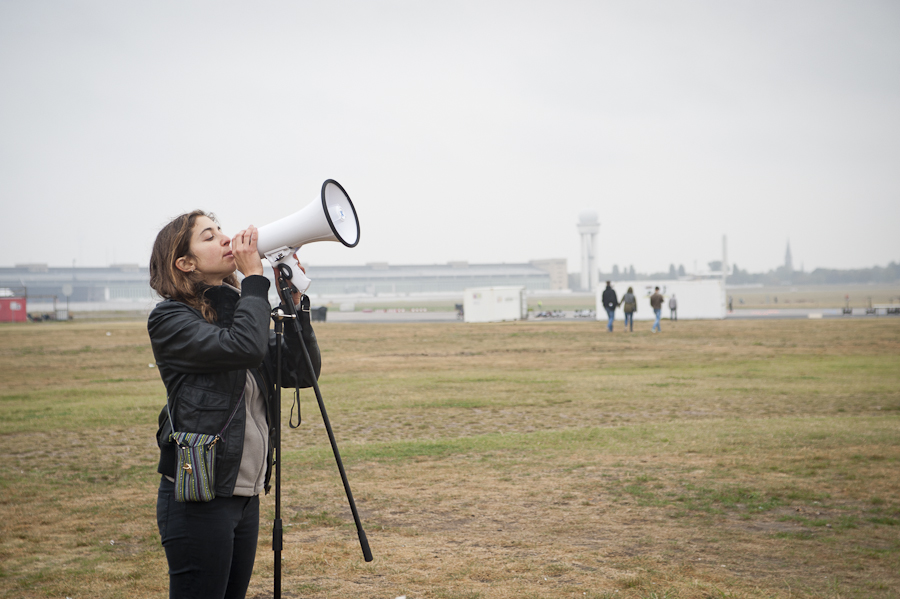
Tempelhof Decolonial Map in its current state in 2016
Anaïs Héraud-Louisadat and Nathalie Mba Bikoro
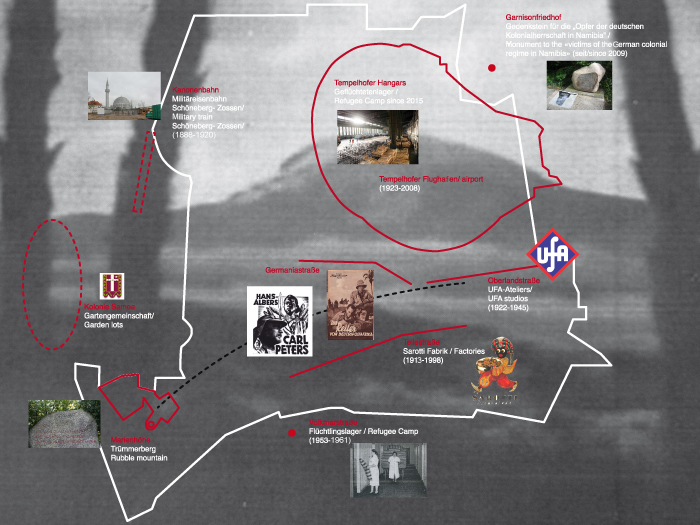
Finissage: An Introduction To A Decolonial Atlas
Interventions and talk at Tempelhof Museum
Berlin, 2016
The finissage event at Tempelhof Museum included new outdoor installations including the Kiosk Culture van moveable museum and a live performance by both artists. The objects displayed in the exhibition were transported together with the audience into the van and the Kiosk Culture tour continued its journey on Saturday 1st october 2016 at 1pm around Tempelhof District.
Photo: Irene Von Götz
An Introduction To A Decolonial Atlas
Interactive City-Tour in cooperation with Tempelhof Museum
Berlin, 2016
Over the 19th and 20th century the district of Tempelhof has become a site of immigrant movements and archaeologies that have left contested spaces of monument culture and the way we remember them. Exploring sites like Marienhöhe as a space for propaganda movies like Die Reiter von Ost-Afrika & Carl Peters, the Universum Film AG (UFA) studios to the Sarotti Chocolate Factory and their „Black Moor“ culture, how did African representation and its links to Germany created the first images of a Colonial Africa? How do these experiences of the past anchor within today's culture & politics?
Photo: Irene Von Götz
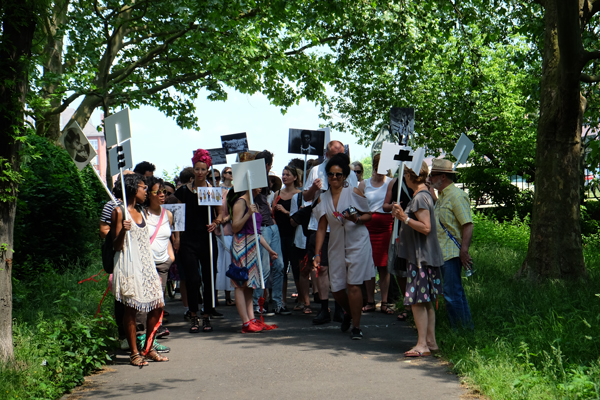
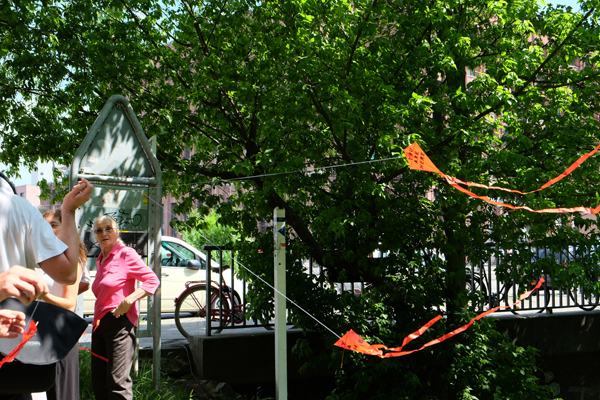
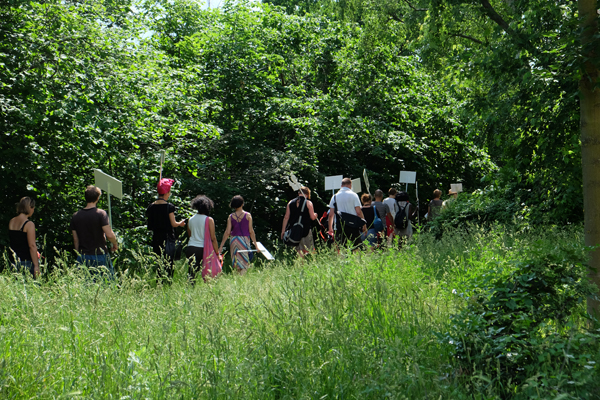
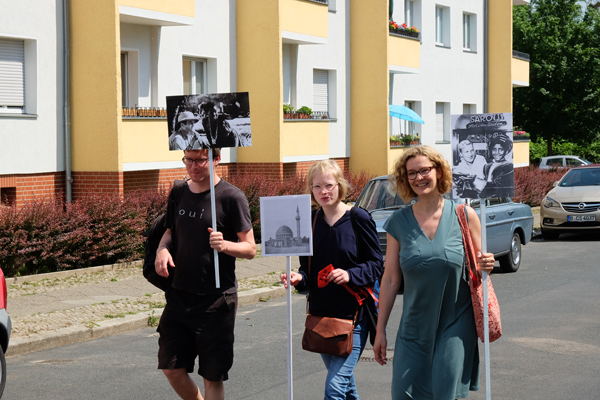
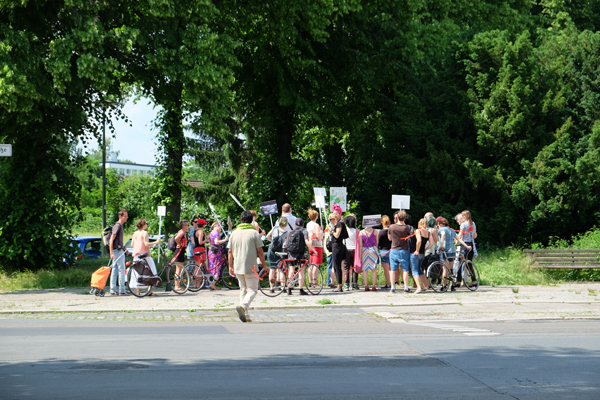
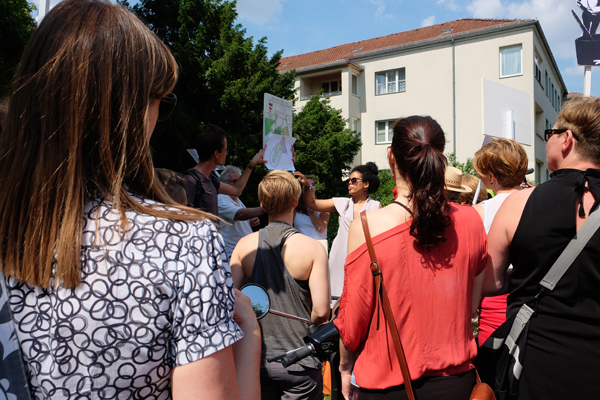
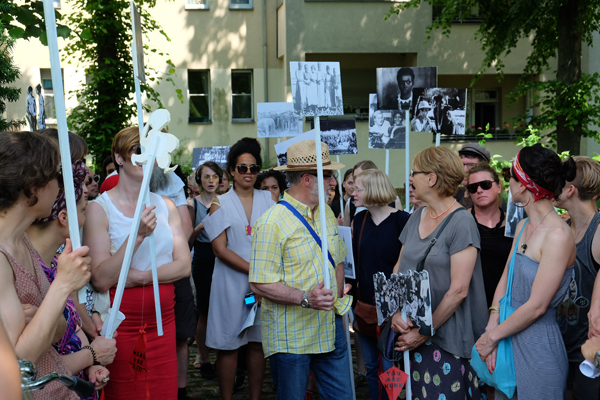
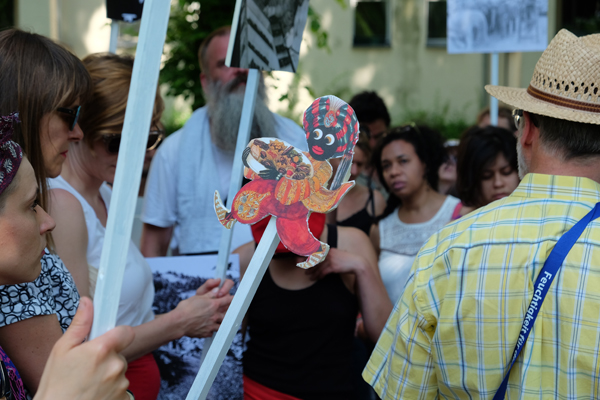
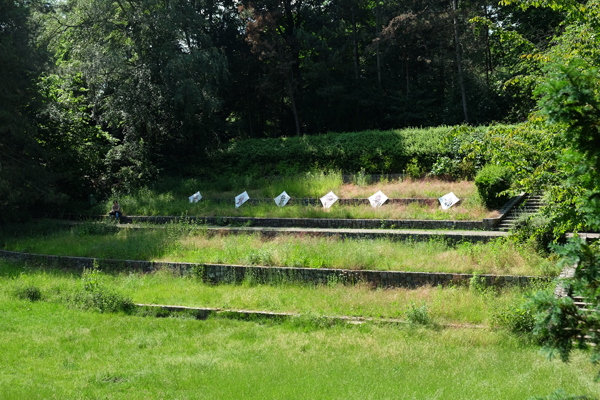
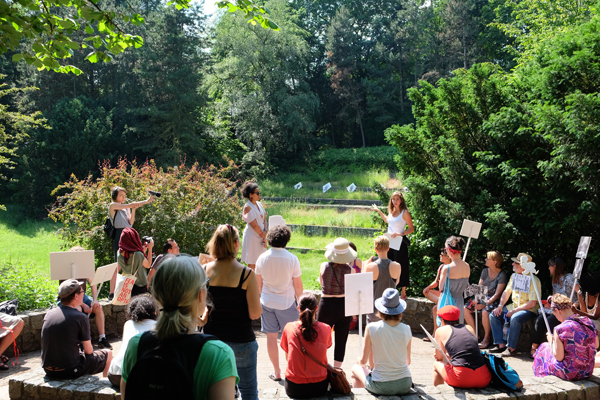
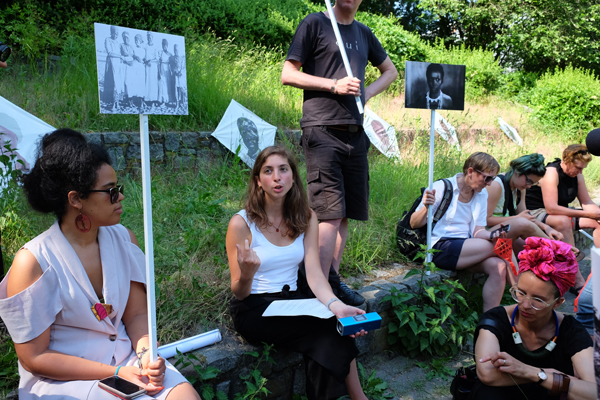
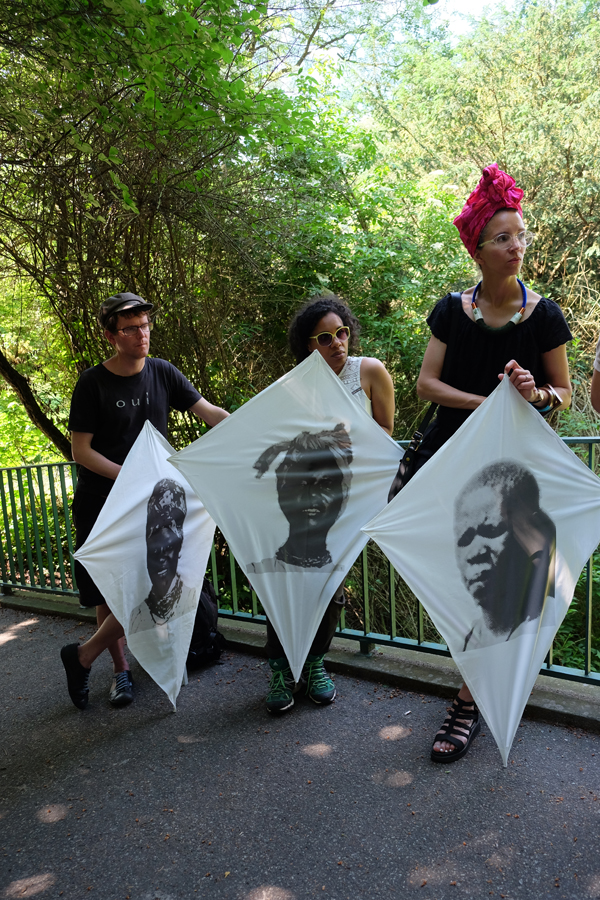
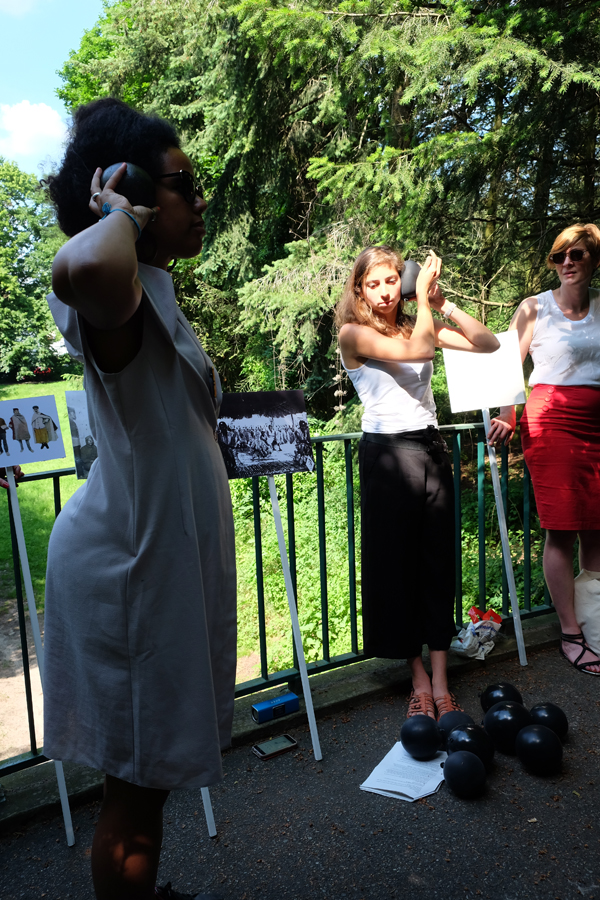
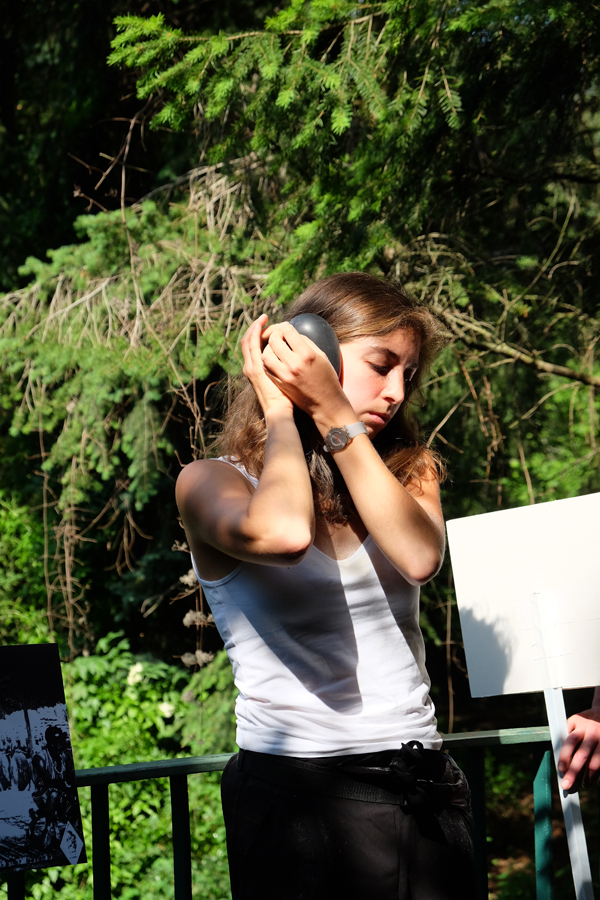
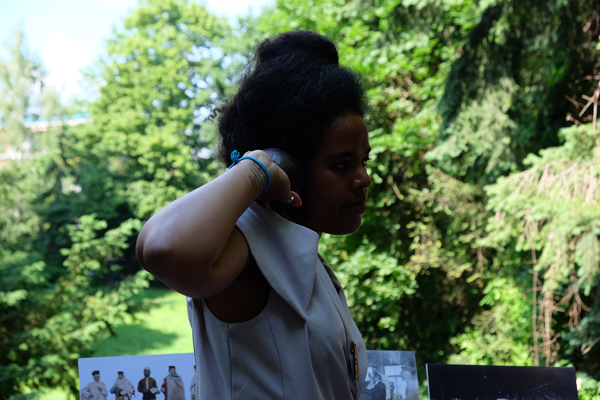
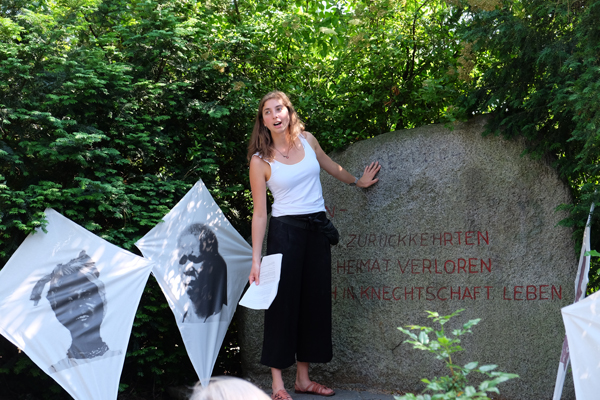
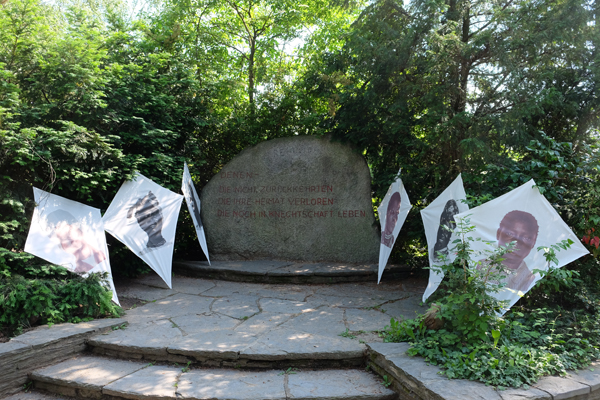
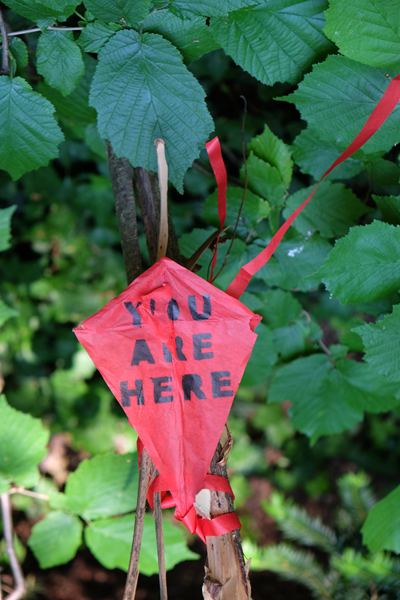
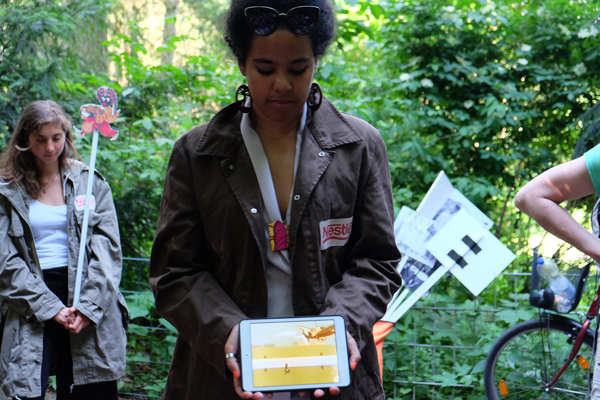
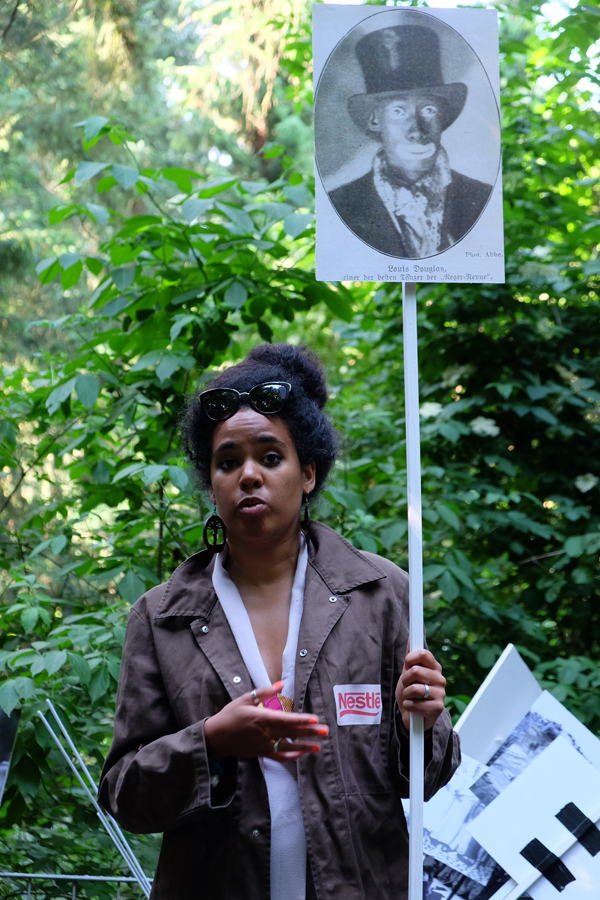
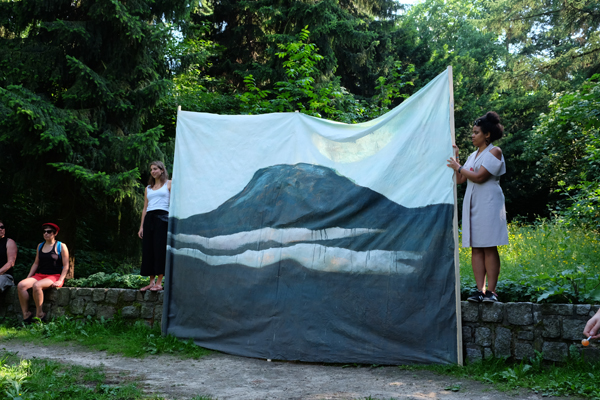
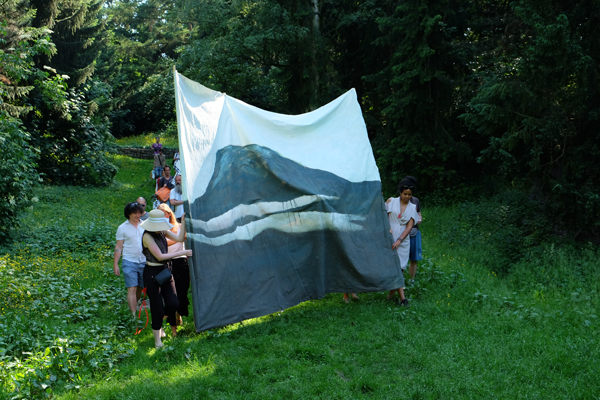
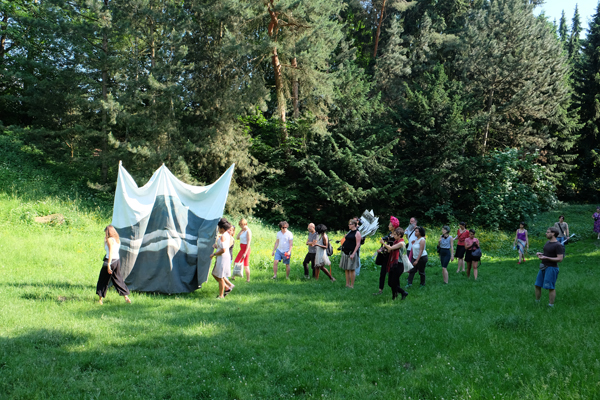
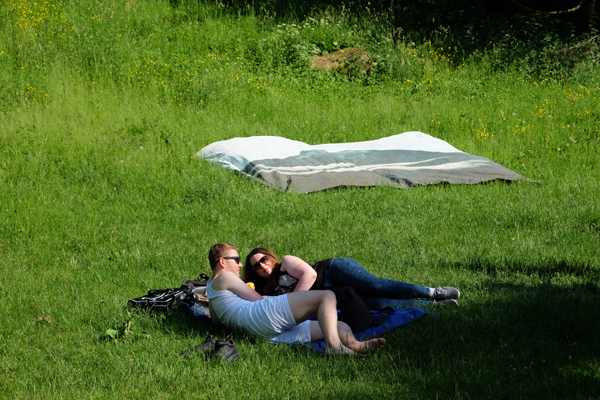
An Introduction To A Decolonial Atlas
Interventions and talk at Tempelhof Museum
Berlin, 2016
The two artists propose artistic interventions in the permanent exhibition of the Museum Tempelhof. Through performance, film and installation, the displayed historical collection of Tempelhof/Schöneberg become the context for their research on colonialism in Germany.
Photo: Squat Monument
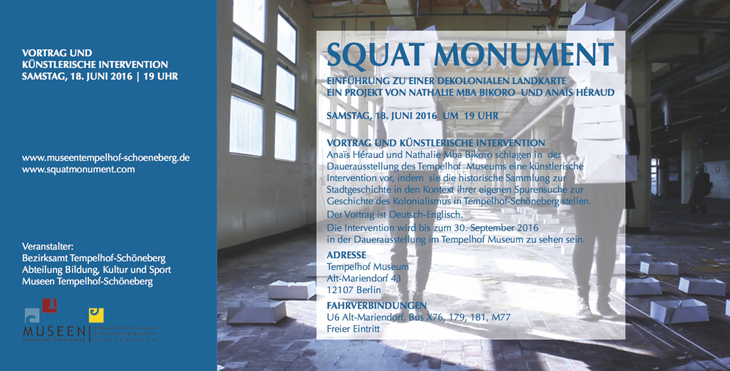
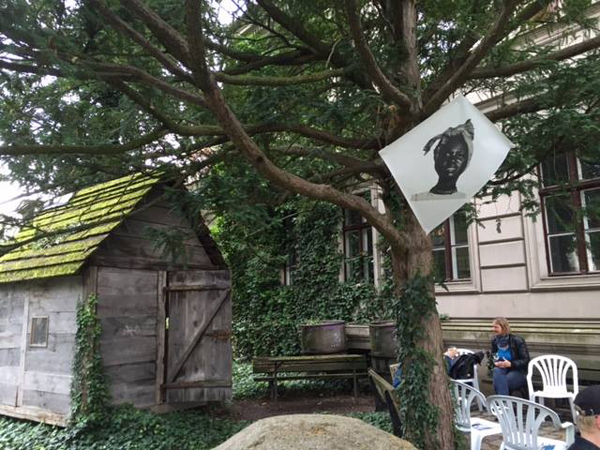
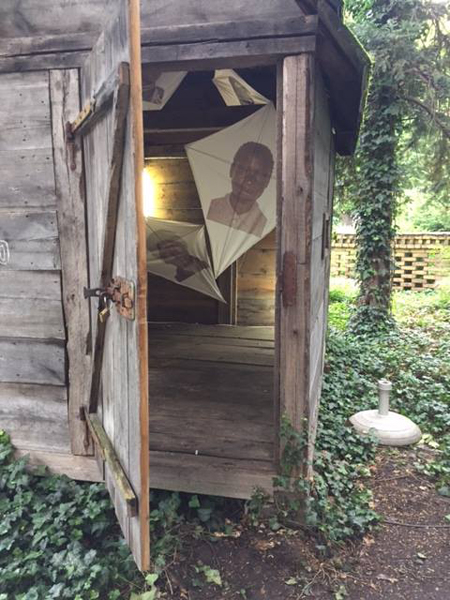
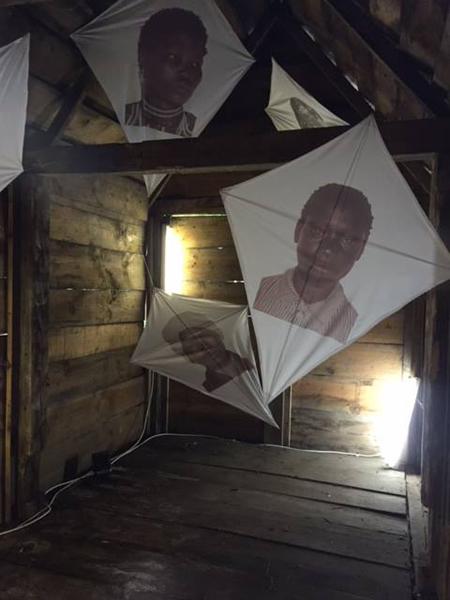
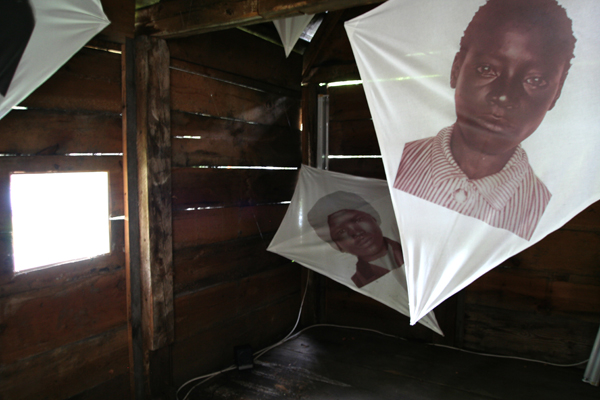
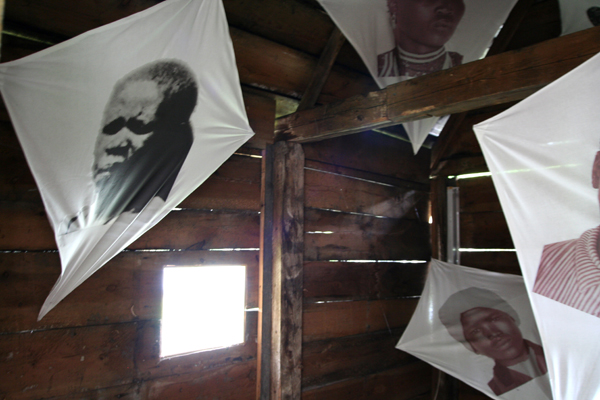
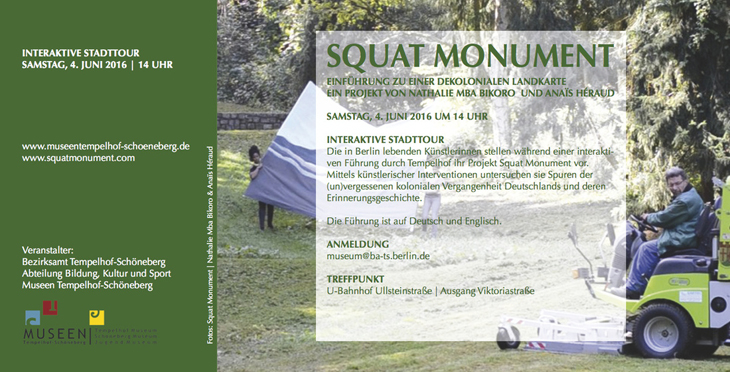
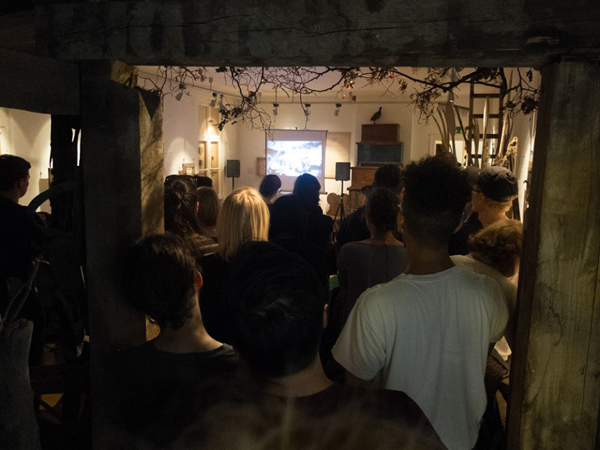
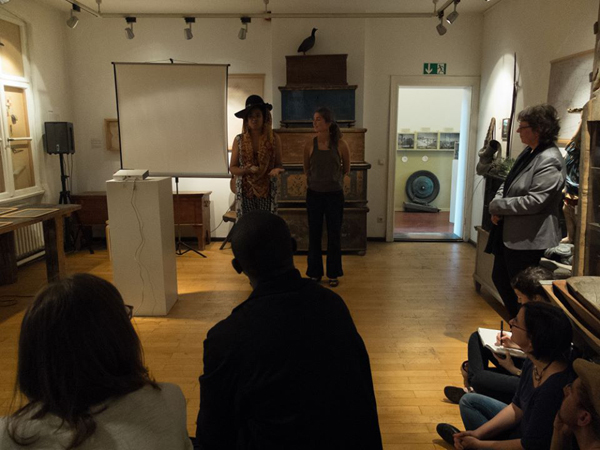
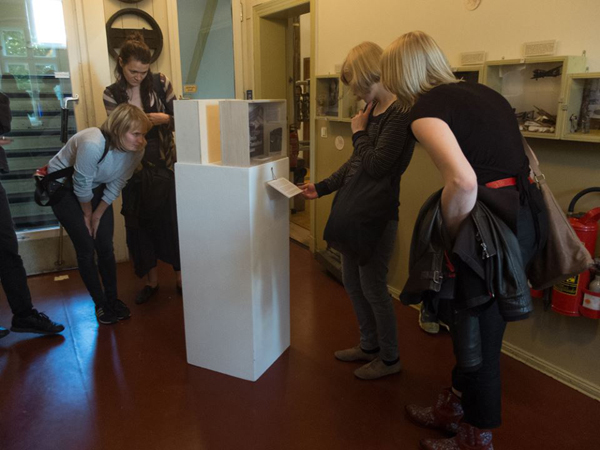
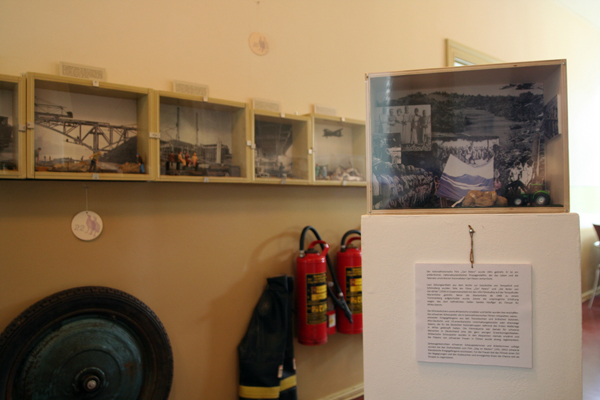
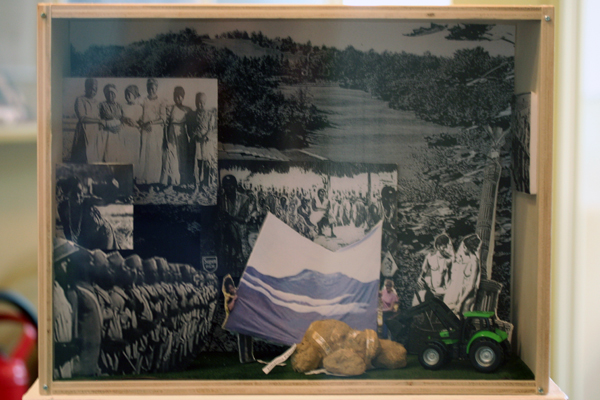
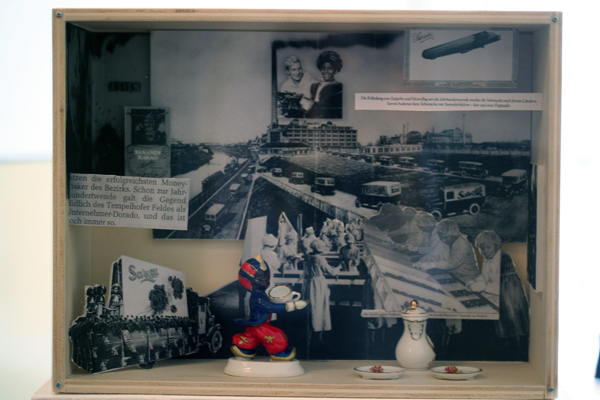
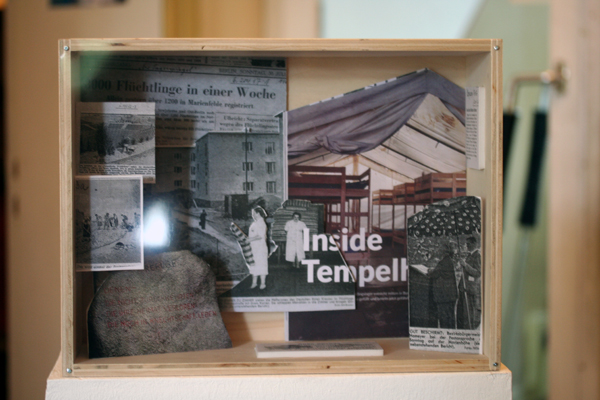
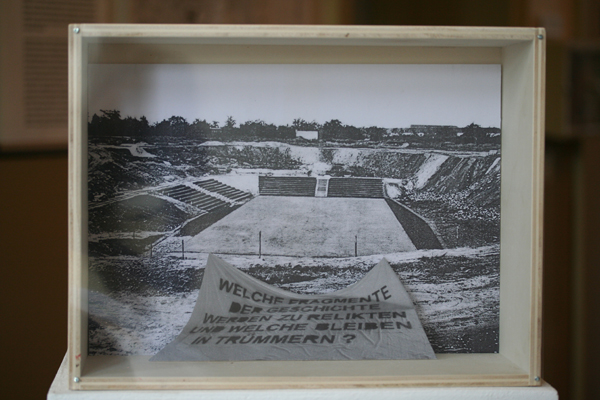
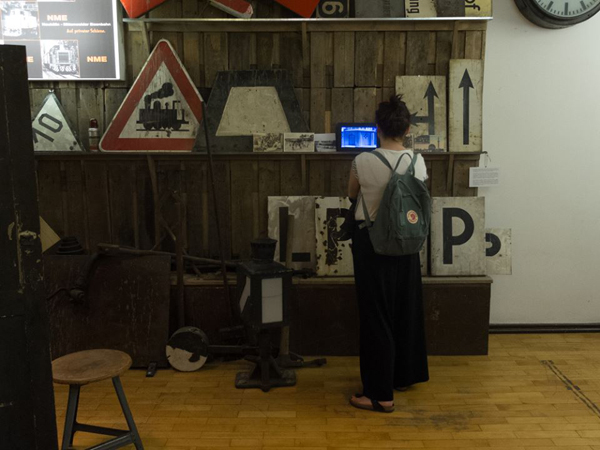
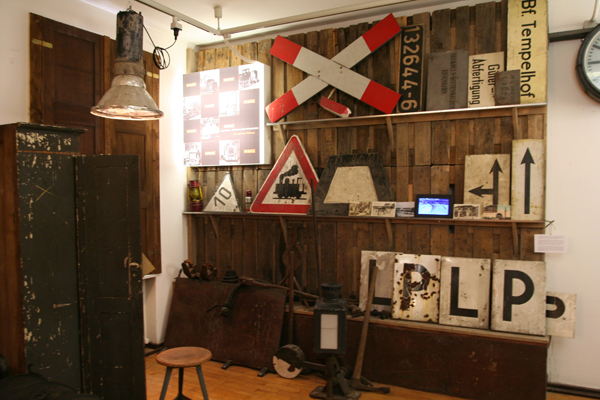
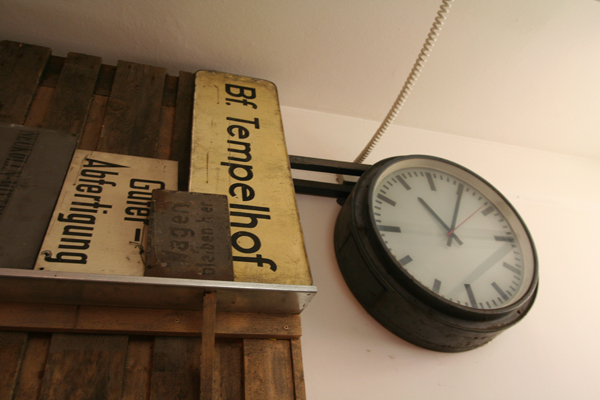
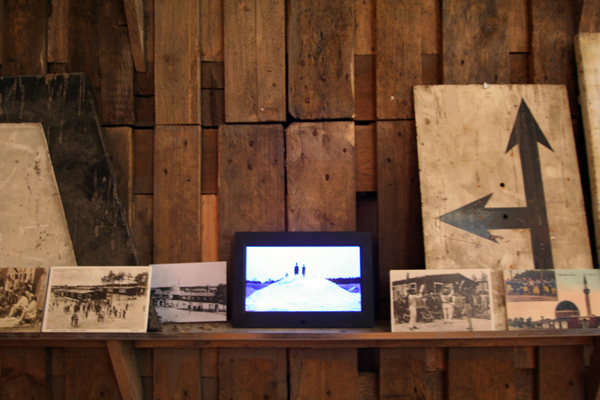
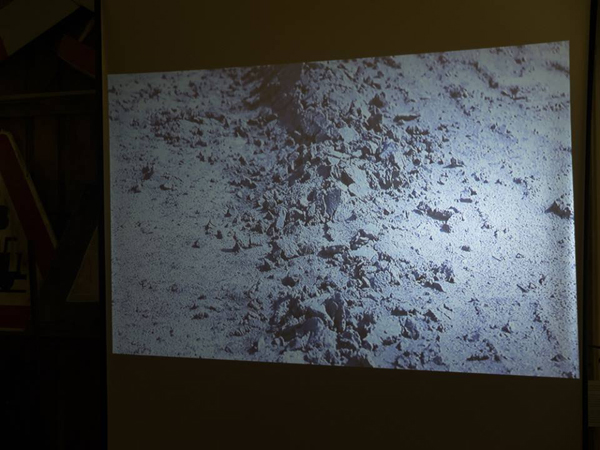
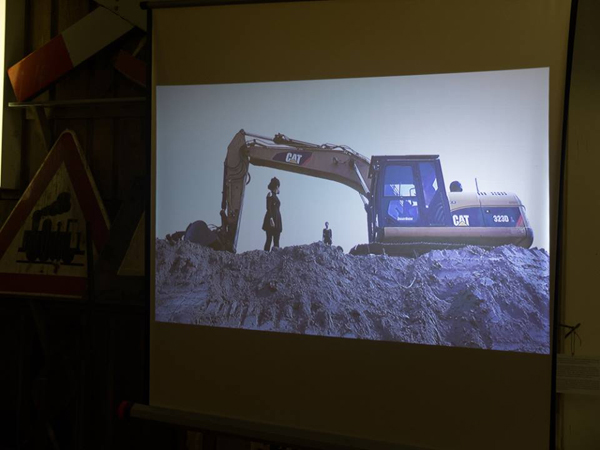
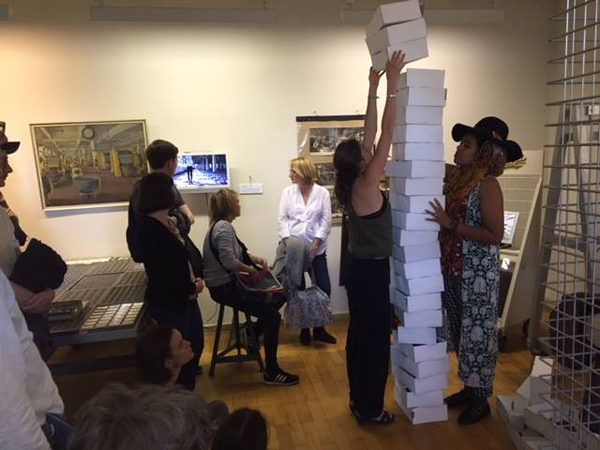
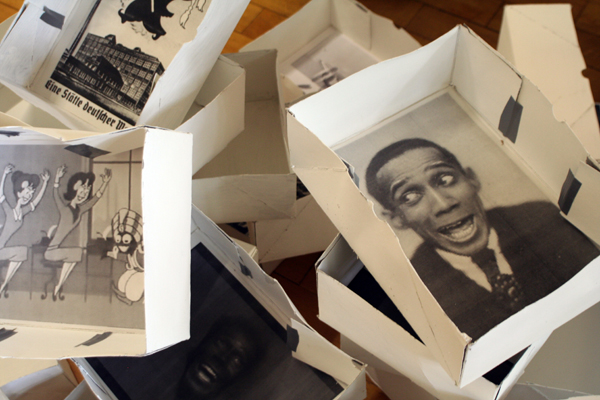
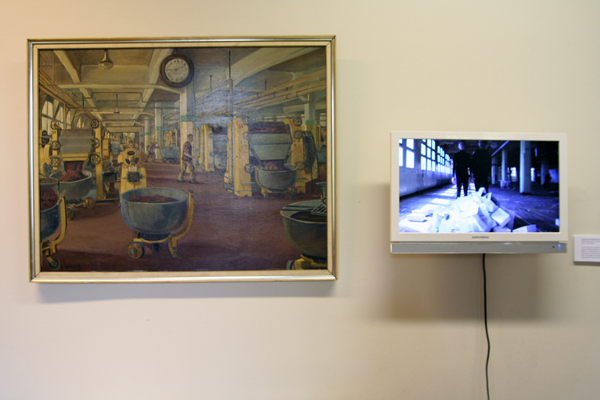
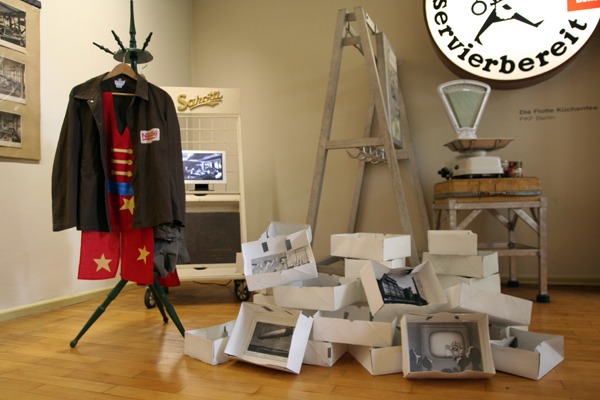
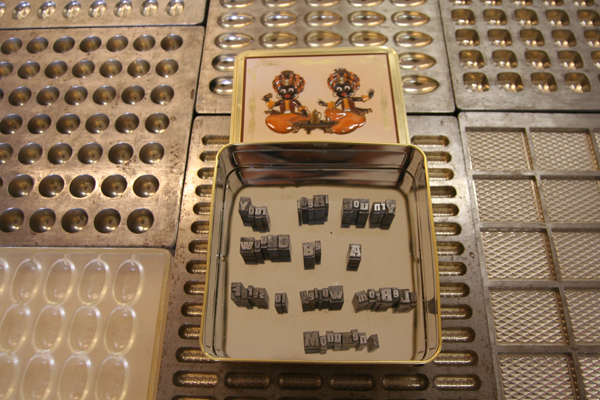
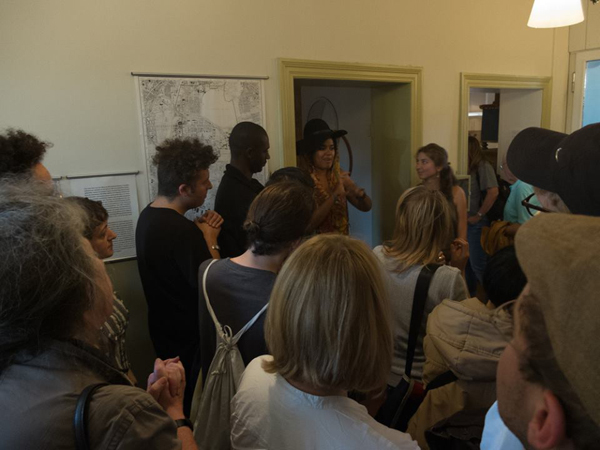
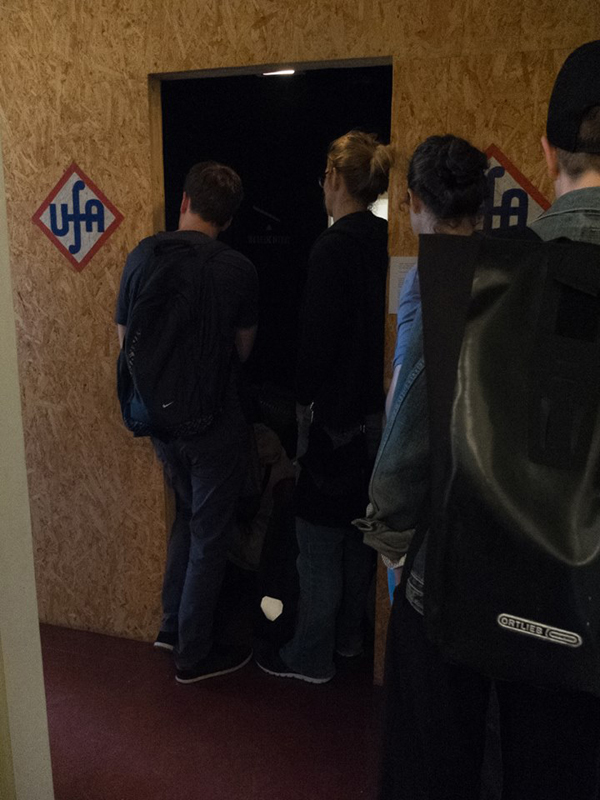
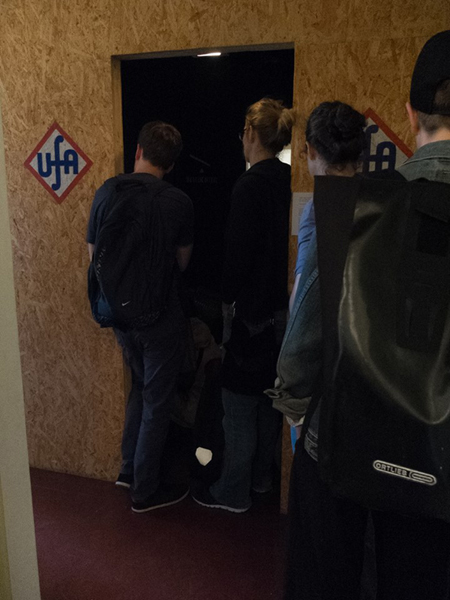
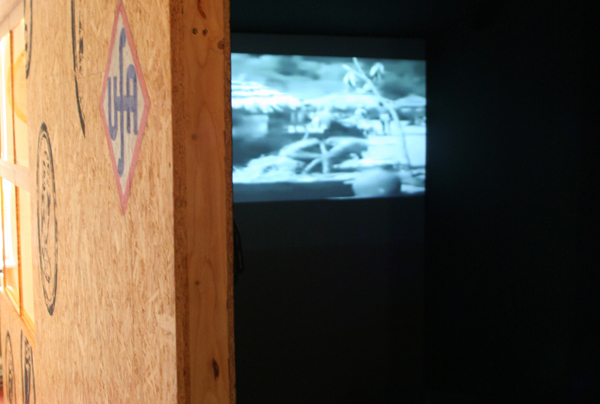
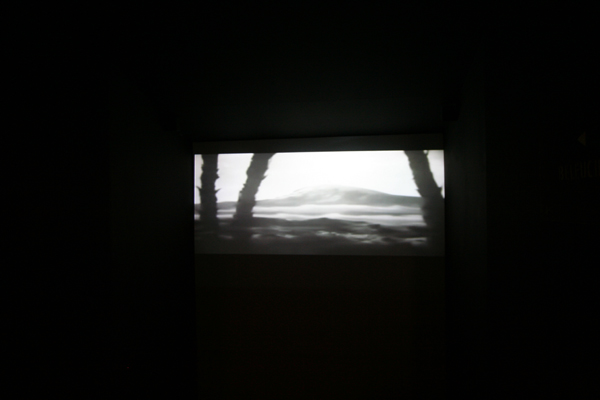
Poster, 2015
District, Malzfabrik, Berlin
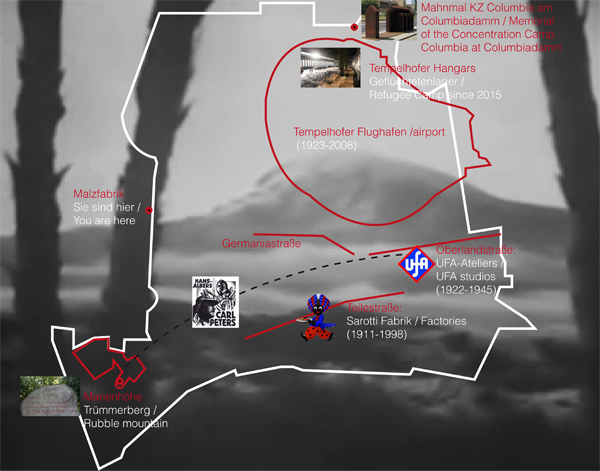
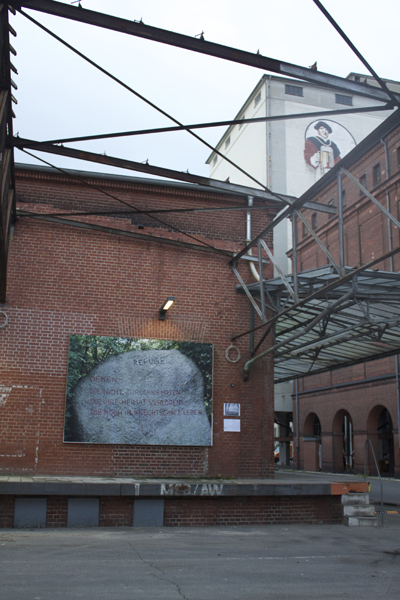
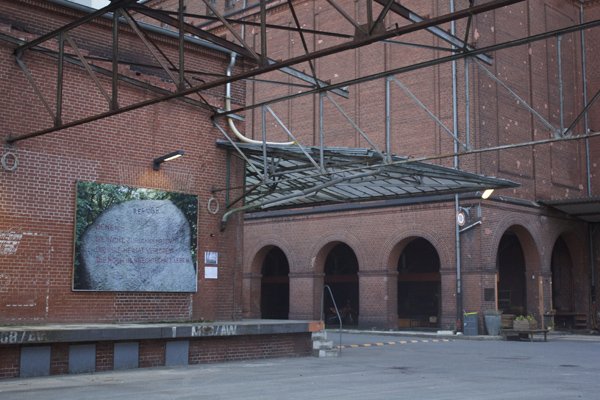
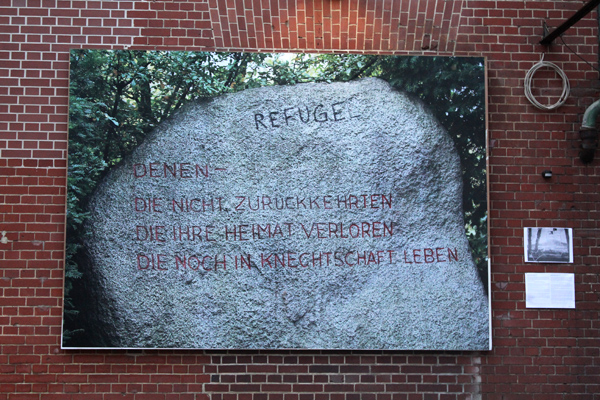
An Introduction To A Decolonial Atlas
District, Malzfabrik, Berlin, 2015
Photo: Squat Monument
Presentation of a Decolonial Atlas of Colonial and Post-Colonial Histories of Germany with a focus on the district Tempelhof in Berlin, including a theatre laboratory based on Aesthetics of the Oppressed led by Bárbara Santos.
The evening focused particularly on Colonial narratives and Black Women's presence in the early 20th century in Germany with a screening of short films Deutsche Frauenkolonialschule (1937) and Polyglot by Amelia Umuhire (2015).

